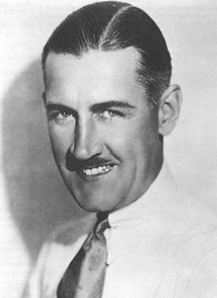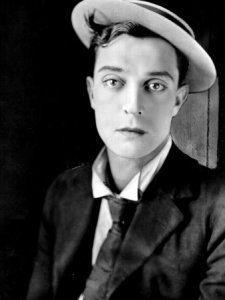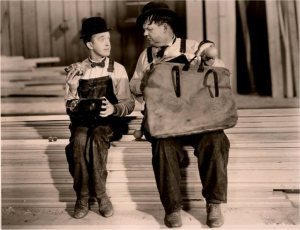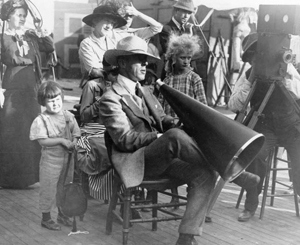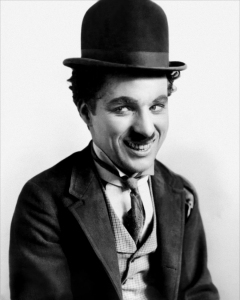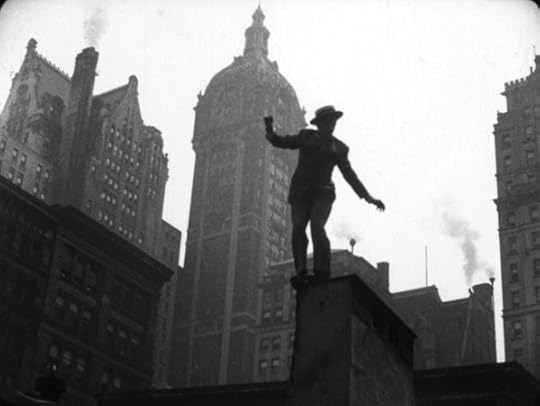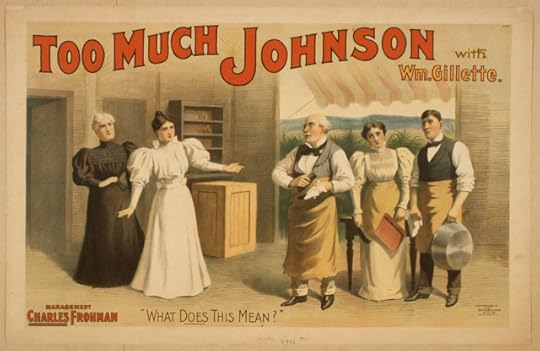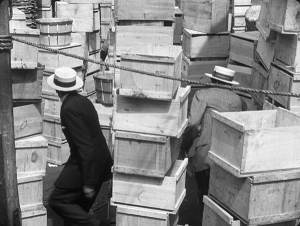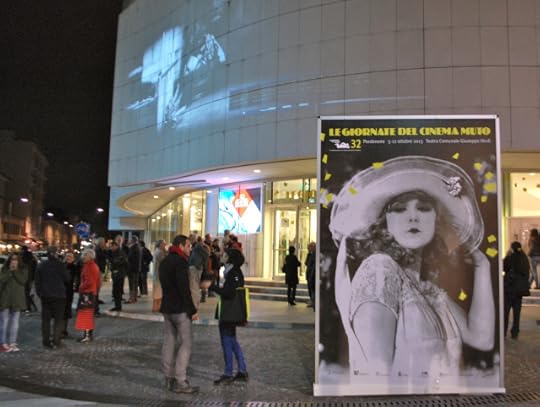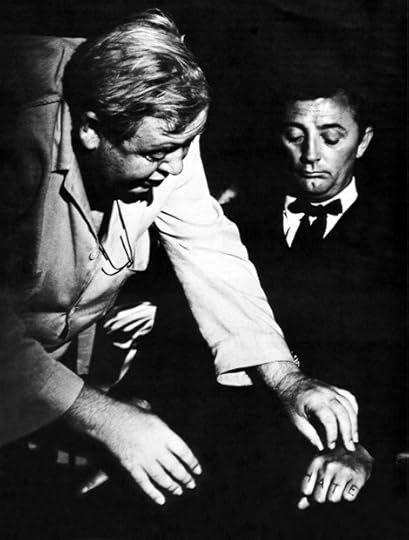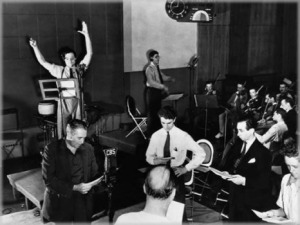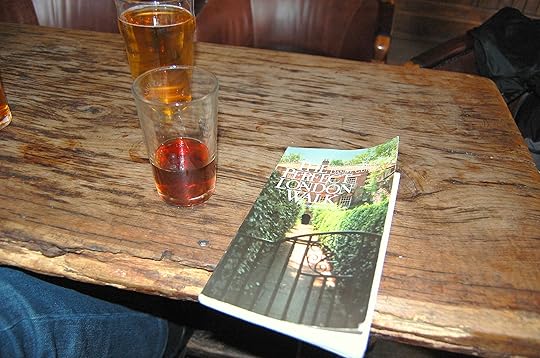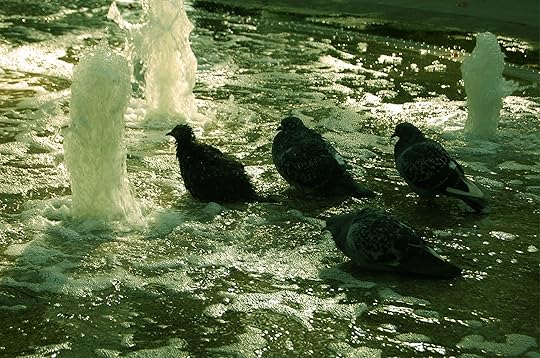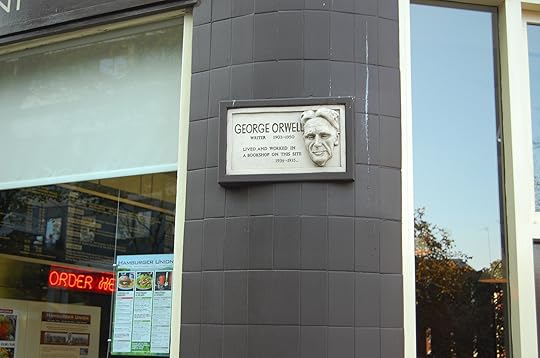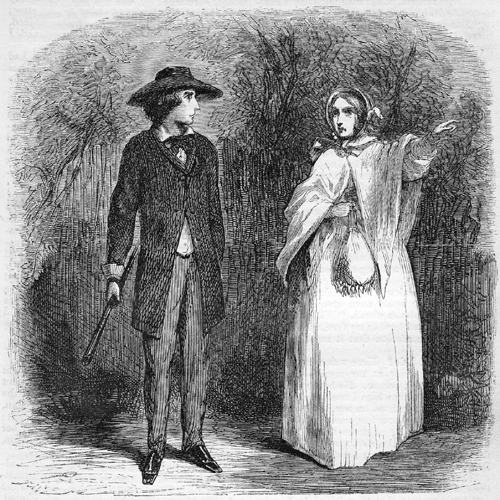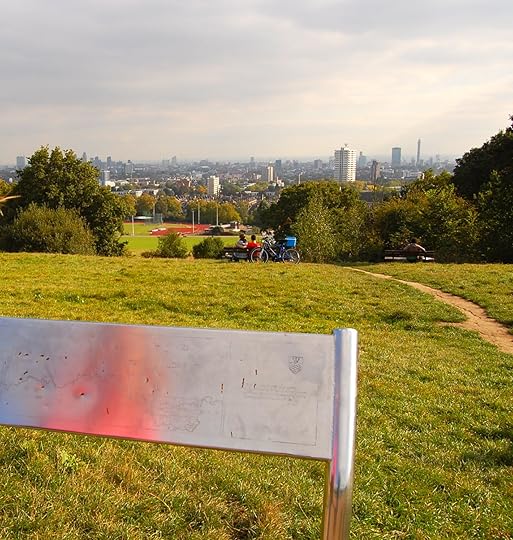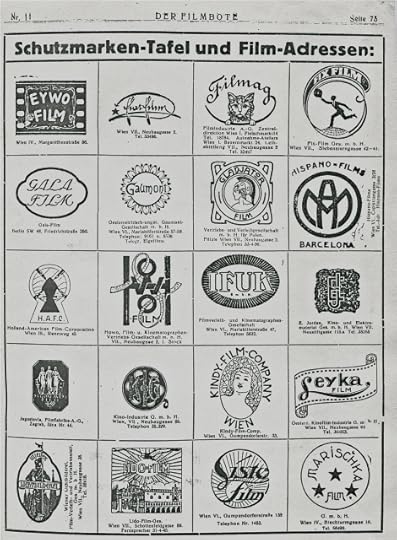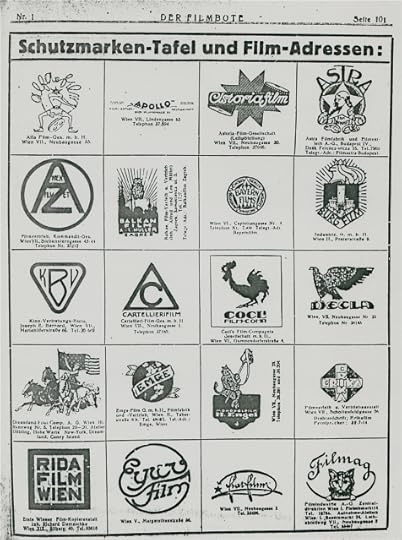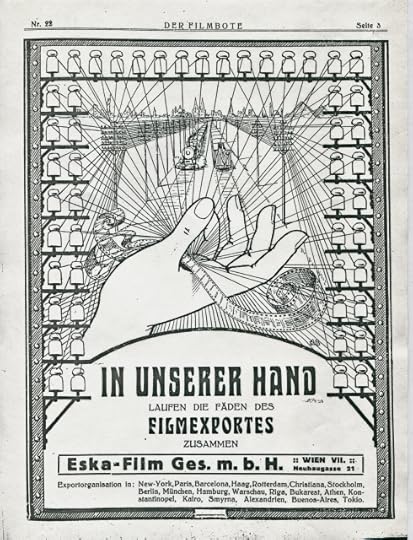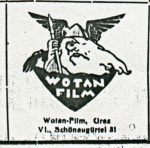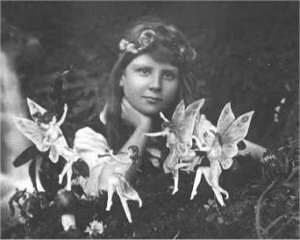Lokke Heiss's Blog
November 29, 2018
Ring Theory
[image error]
ABSTRACT
The presence of rings on fingers are frequently seen in settings where narrative film occurs. This study assessed the relationship between the choice of finger for the ring as a predictive component for the ring bearer’s essential character traits, and describes how digital ring placement may serve as a visual cue and a foreshadowing to the audience early in the narrative as to ring bearers attributes, and subsequently what genre or genre(al) direction the narrative may follow. As such, over 200 films from multiple countries were sampled. The sampling of films was taken using the usual and customary cultural benchmarks, starting with the codification of narrative with TGTR (The Great Train Robbery) and ending with the Rat Pack Era’s Ocean’s 11 (ed. the only version that matters).
The sampling was done with a rigid enforcement of a pre-Code bias, and with concurrent strict nonenforcement of Hay’s Code rules. Other components of the study include the observation of physical nature of the ring itself to its diagetical role internal to narrative itself, with concurrent awareness of a ring’s symbolic power, its capacity for multivalency, and finally for its effect as a sliding signifier both to finger placement or to the ring bearer’s character arc – as we are talking about rings, the idea of a sliding signifier is double-encoded as both literal and metaphorical.
Conclusion: Although more research in needed to identify the relationship between digital ring placement as a way to predict foreshadowing and character revelation in film narrative, findings suggest a need to sensitize film students and cineastes as to: 1) The merits of looking at which finger a ring is worn when a character is first introduced in a film, 2) To consider the type of ring and finger placement as a Stanislavskian external manifestation of the actor’s “experiencing the role” and 3) To consider that the notation of both location and progression of ring placement may also give a character’s starting point in his “through-line” in the narrative, and will give the viewer a better overall appreciation of the how the actor will pursue the character’s superobjective.
Discussion
“Plutus himself,
That knows the tinct and multiplying med’cine,
Hath not in nature’s mystery more science
Than I have in this ring“
Shakespeare, “All’s Well That Ends Well”
The time has come not to talk about cabbages and kings, but of Murphy beds and rings. One evening, after a day of watching movies at the Cinecon Film festival in Los Angeles, I drifted over to a nearby bar with my friends, a group called the Daughters of Naldi, for a rousing discussion about the films we had just seen.
The conversation shifted from Douglas Fairbanks to the typical kind of apartments people lived in during the Classical Hollywood period, and then to how these apartments were furnished, and then to the subject of Murphy Beds. For those uninitiated, a Murphy bed is a bed pulled out of a wall, is popular even today as a space-saving device, and named after William Murphy, who patented a pivot and counterbalance design that made existing wall beds much more convenient to use. Murphy Beds are inherently funny; they move in strange and mysterious ways, and an entire generation of silent film comedians have somewhere in their careers, based one or more routines involving an encounter with a Murphy Bed. In the comedy One A.M. Charlie Chaplin takes up half of the film with his (very drunk) character merely trying to get into his very unwilling Murphy bed.
While the DoN crowd resolved to pursue the study of Murphy beds by make of a running list of films with Murphy beds—
—I chose to go a different direction. The idea of producing a list or inventory inspired me to pursue a separate investigation of something I had been noticing in an off-hand way for a long time – that is, rings worn in films. And to be clear, the interesting part of what I was noticing was usually not the ring itself, but on what finger the ring was worn.
With each scene in a film having the possibility of being densely packed with information, I reasoned how, where, and why an actor or actress wore a ring could provide a code to the audience – sometimes obvious, more often subtle – about the ring bearer. In particular, I posed a question to myself: Was ring placement more or less random – or by watching a lot of films, could I discern a typical code for each finger that would be predictive to the character’s personality or fate?
MATERIALS and METHODS
The Study – Methods Used:
I came into this idea of ring placement with the obvious knowledge that a ring on the “ring” finger would imply that the character was either engaged, married or committed in some way. But did the other fingers have their special code? I decided to investigate. My method of research was very scientific and precise – I watched hundreds and hundreds of movies, framing my time of particular interest from the silent era to about 1960, and paid attention (when I remembered) to always note what fingers the rings place and if the ring position changed as the story progressed. After years of study and untold number of films watched, here are my conclusions – but first a warning – this study is about characters in movies, not real life. Although there is obviously some connection of these ideas about rings to our cultural norms and expectations (otherwise these codes would not function the way they do), in real life there may be abundant and obvious reasons why a ring is worn on a particular finger that have no connection in any way to the topics discussed in this paper – to state one example among many, that’s maybe the only finger that the ring fits. As Freud famously said, “Sometimes a ring is just a ring.”
RESULTS
Using 1904 to 1960 (the dates of the Great Train Robbery and Ocean’s 11 as benchmarks) and with a hierarchical regression (R2 = TCM) my research demonstrated a B.S. (aka “applesauce” value less than my alpha value for significance, indicating a high level of significance for my ring theory. This means up to a 95% self-confidence level, I’m 100%, absolutely, totally correct about everything you are going to read further in this study. Note that the important element of ring placement is the finger, not the hand. Whether the ring is on the left hand or the right is of minimal importance compared to which finger the ring is on (for a movie audience, it’s much easier to “read” which finger is being used than to decide if one is looking at a right hand or left hand).
A Pinky Finger Ring – “Player or Poseur?”
Early in my research, I quickly decided that a “pinky ring” was the most obvious and clear-cut of all personality markers for finger choices, especially for men. As I watched films from the The Great Train Robbery up to the Rat Pack, I saw a long line of gangsters, rogues, rakes, and roués parade through my films, most if not all – at some point wearing pinky rings. These were men who wanted much and took what they want, and were almost always single, or acted like they were single. Women who wore pinky rings often were also presented as also having dubious or uncertain morals, although they were not as often tainted with a criminal element.
All in all, wearing a pinky ring for either sex is a code for what can be called in the common vernacular, a “player.”
[image error]
The player – Paul Muni in Scarface (1932)
But there was a second group of characters who wore pinky rings, the “wannabes,” the characters who wanted all the world to think they ran in the same crowd as the rogues, rakes, and roués, as if just wearing the ring showed the world you were just as tough. I call this type of pinky ring bearer a “poseur.” As in the animal world, where harmless snakes can copy the colors of venomous ones to reap the reward of the fear and respect of others, this group of men attempt to adorn themselves with a similar type of marking.
As one considers the two groups, one sees an interesting overlap between one and the other. Every poseur might have a little player in him, and certainly every player has some element of poseur. After all, a supremely confident male – a “zen master of masculinity” wouldn’t need a marker to announce the fact. Another element at play is that much of the drama you are about to see may be the very question asked by the presence of the ring: Is this man going really to walk the walk or talk the talk? Or is he going to fold under the first sign of danger and run for safety?
[image error]
The poseur – Peter Lorre in The Maltese Falcon (1941)
To confuse the issue slightly, not all pinky rings on men signify a criminal background or forecast an evil or salacious intent. Sometimes men who belong to an armed service, or social or professional organizations wear pinky rings as a sign they are part of a fraternal group – a band of brothers, so to speak. The fraternal or professional nature of pinky rings is especially evident in European films from this period.
While the context of the story can help the viewer decide on “what side of the tracks” this band of brothers is located (legal or criminal?), the character foreshadowing of pinky ring worn by a man still folds into the larger question the narrative will ask of its owner: “player or poseur?” The bearer of this particular type of pinky ring may not be a gangster or criminal, and in some settings may actually be the hero of the story, but the fact remains that his pinky ring is still giving us a code for masculinity and virility, which also usually means on some level he is single and sexually available. If the wearer of a pinky ring turns out the be the lead role in a story with a romantic plot, watch for the ring to disappear somewhere in the third act.
Pinky rings are the easiest and most predictable of rings to look for, so understanding them is Ring Placement 101.
A Ring on the Ring Finger – “Commitment”
[image error]
Teresa Wright and Harold Russell in The Best Years of Our Lives (1946)
You don’t have to be a ring scholar to know that a ring on this finger means that character has made a commitment, promise or pledge to something or someone. Commitment does not always mean a promise of marriage, it can be to an artistic passion, cause, or even to a religious idea. Although a ring finger is the most standard (and almost universally recognized) code for any finger, even this placement has its complexities. For example, when combined with rings on other fingers, the issues of commitment take on a more nuanced reading. Or the nature or type of ring itself can bring an ironic commentary to the customary idea of what a ring finger is supposed to signify.
A Middle Finger Ring – “A Woman of the World”
[image error]Stacia Napierkowska in The Queen of Atlantis (1921)
A ring on the middle finger is much more often seen on a woman than a man, and in terms or reading or decoding its message, has the richest number of possibilities. But if one sums up the message of the middle ring finger, it is a symbol of sophistication. A woman who wears this ring is a “woman of the world,” someone who has learned about life by study and experience, someone who is not an ingénue.
But let us keep in mind that as not all poseurs wear pinky rings, the character in the drama you are watching may fashion herself as the mostly worldly women ever, when by other clues we know that she’s not only just “fallen off the turnip truck,” she might not even know what that expression means.
[image error]An Index or Pointing Finger Ring – “The Adventuress”
In all the years I’ve been watching movies and keeping track of rings, a ring on the index finger is perhaps the most reliable predictor for who that person is. For men, it codes for characters who have already experienced exotic and dangerous activity and are looking for even more thrills and excitement. Women who wear this ring are powerful, and are also risk-takers, looking for adventure. Shy characters (unless under the cloak of disguise) do not wear this index finger rings, this is a ring worn by men and women who are used to being in command of their destiny.
A Thumb Ring Finger – “A King, an Empress, Someone Exceptional”
[image error]
Tom Cruise in Interview With A Vampire (1994)
A ring on this (specialized) finger is rarely seen in a film. It marks a ruler, a king or queen, an emperor, although it could be worn by a perhaps a kingpin of a crime organization, or someone especially skilled. A thumb ring is a ring of power. Whoever wears a thumb ring is “master of his domain.” Not seen often in films unless one is watching an historical epic, or a Fast and Furious sequel (Ed. Note – we will tolerate this brief excursion into post-1960 film to make a point).
No rings on any finger: “Off The Grid”
Having no rings on any finger means that at that moment, the character is not playing the Ring Game. Sometimes the lack of a ring might mean something, obviously the character of youth or an ingénue would be examples of someone expected to not wear a ring, or there may be a plot point involving the loss of a ring, but otherwise there is no way to reliably forecast a character’s attributes or their fate by a lack of a ring. Wait patiently for a ring to later appear, or obsess on what hat they might be wearing.
Rings on more than one finger: It’s Complicated
Surprisingly few characters in films wear more than one ring, when they do, it’s often related to a performance-related function, such as appearing in a night club act, or a scene of heightened awareness of appearance (such as being dressed like a gypsy), or in some way related as being in a masquerade. My general rule about rings on multiple fingers: The more rings you see, the more the rings are about an overall sense of costume (for example an excess of ornamentation), and not a particular commentary about the rings themselves.
But there are exceptions to this generality, in particular the pinky/ring finger combination. An example is John Stahl’s Husbands and Lovers (1924) where a wife (played by Florence Vidor), long exasperated by her husband’s lack of attention, begins to flirt with a family friend. The storyline is anticipated by the fact that at the beginning of the story we see her she wearing not one but two rings, her wedding ring and – yes, you guessed it, a pinky ring. She has a commitment of sorts, but the pinky ring tells us the arrangement is on shaky ground. The fact she has rings on both these particular fingers will (to a practiced eye) foreshadow the nature of what the storyline in this film will explore. In the previous example, one can see that Tom Cruise’s character has both a thumb and pinky finger. The combination of a pinky ring (player) and power ring (power) has an obvious meaning: This man is “mad, bad, and dangerous to know.”
Advanced Ring Theory
[image error]Earlier I mentioned that I primarily look at the which finger has the ring instead of the ring itself, but sometimes the nature of the ring itself can cast an ironic twist to the usual rules. A good example of this is in the classic film noir, Double Indemnity, starring Barbara Stanwyck and Fred McMurray. When we first see Stanwyck in her role of Phyllis Dietrichson, she is wearing a ring on her fourth finger. But this is no “ordinary” wedding ring, rather it’s large and gaudy, so garish that it’s perhaps not a wedding ring at all, even if it’s on the “correct” finger.
Her character is breaking the “rules” of ring placement, or perhaps more accurately, bending the rules to her own purposes. And as we observe her “wedding” ring and watch her flirt shamelessly with McMurray’s character, we start to get a clue as to how many levels of duplicity she is going to show us.
Even More Advanced Ring Theory
[image error]Rings are symbols, and more importantly, they are multivalent symbols, that is, they can have multiple meanings, even meanings that at the same time contradict each other (a lexicon example of this would be the word “white” which can be a symbol for strength or purity, but also can be a symbol for cowardice). Objects are less “fixed” than words, which can’t “jostle” and “slide” their meaning around as much, by contrast, objects like rings can be used as symbols to represent an almost limitless number of ideas; a promise of commitment, a bold statement of interest in adventure, to in the case of J.R. Tolkien, a representation of absolute power.
But one can focus on more traditional symbols for these rings and play directly with the codes and meanings in wonderful and contradictory ways. A great example of this is character of Sir Percy Blakeney played by Leslie Howard in the 1934 version of The Scarlet Pimpernel. Set in the time of the French Revolution, Howard’s character appears to be a useless British fop, worried only about his appearance and with no interest in politics. In reality, he is the heroic Scarlet Pimpernel, a man who courageously travels to France to rescue poor innocents from death by the guillotine.
[image error]When looking at Leslie Howard in his fop role, one sees he’s wearing a pinky ring. But let’s decode and unravel what is going on – here is a player (in the sense that Percy is really a man of action and a hero) … posing a poseur (the fop is his disguise) …who as a fop, is posing as a player (extending the idea that a fop would like to pose as a version of masculinity, a man of action). Because the role involves a secret identity, here is a situation that this ring signifies not just one, but three separate layers of meaning, all performing their symbolic function at the same moment. And now that you know your Ring Theory, you can enjoy watching Leslie Howard’s performance all the more.
Conclusions, and A Discussion with Dormitor About Early Film
The Dormitor Society is a group of film scholars who are especially interested in early film – from its beginnings to approximately 1915. During this year’s festival at Pordenone, I met with this group, and in reviewing my ideas about Ring Theory, a question came up: An obvious and important point is that the Ring Theory is not about decisions people make in real life, but rather is a tool that can be used to foreshadow character attributes in fictional stories.
But there is an intersection, a locus between the reality and the diegetic world of the character, and that locus is the actor, because he or she (or someone they work with), does have to make that choice. In other words, Ring Theory has an extension into the real world, because it is also about the choices the choices an actor makes in performing her role. And here was the question posed by Dormitor:
From film’s beginnings to a certain point where it matured as a business, (before vertical stratification changed the nature of cinema), actors often did their makeup and costuming, and certainly rings were part of that process. So are these ring placement codes any different in this early cinema? Where these codes scattered and haphazard, just as genre stories themselves were often inchoate and incomplete? Or did these ring codes arrive fully fleshed out from actor’s knowledge previous theatrical troupes and earlier traditions?
With this question in mind, the next day at the Verdi Theater I sat down for a program right up Dormitor’s alley, a screening of short French films all made before 1915. The first of these films met all the usual codes, such as an older man (with a pinky ring) courting a young woman with no ring, and a film about a widower who wore both his wedding ring and a pinky ring – so far, everything was going to expectation.
And then came a wonderful and hilarious film with the name of The Vengeance of the Town Constable (1912), a comedy farce directed by Louis Feuillade, about a newly married couple, the Brasems, who move into an apartment next to a town constable (Louis Leubas) who also happens to own the building. This constable loves to play his horn (badly) at all hours of the day or night, and the noise starts to drive the newlywed couple on the other side of the wall crazy.
[image error]
Yvette Andreyor in The Vengeance of the Town Constable (1912)
Because the constable owns the building and is also the law of the town, the couple have little recourse to stop the noise; finally the bride (Yvette Andreyor) goes to her doctor for help, and the doctor prescribes a treatment that seems completely sensible in the context of their desperate situation, he tells her to construct a life-size puppet who looks exactly like the constable, that she can torture whenever she wants. This unusual treatment works like a charm, as Mrs. Brasem enjoys beating on the dummy. Meanwhile, curious as to why his neighbor no longer seems to mind the awful noise, the constable drills a hole in the wall and is shocked to apparently see himself sitting in his neighbor’s apartment! And then things just even stranger in this delightful knockabout comedy about the trials of living next door to people you hate, which is about as good a way to describe the “human condition” as one can find.
So what does this great film have to do with rings? As I followed the antics of poor Mrs. Brasem as she ran helter-skelter trying to keep up with torturing puppets and keeping the constable out of her kitchen, I tried to count her rings – she had so many it was hard, but I eventually counted eight in all, including two thumb rings. The only fingers with no rings were of all things, her ring fingers!
Then it hit me: A French farce where everything is upside-down and nothing is as it seems – in this setting, Yvette Andreyor, who wonderfully conveyed the craziness of dealing with an impossible neighbor, was adding her own signature to her character – as one more farcical element on display, her newlywed character was wearing rings on every finger but the right one. Was this her own decision, done at the spur of the moment when she was getting her costume together? Or did she do this with help or guidance from the other actors, or from Feuillade? It doesn’t matter, because by noticing her subtle but clever addition to her part, I felt like I had reached across a century of time to appreciate a small but funny “inside joke” from a talented actress. Well done, Yvette Andreyor, and my hope is that those who follow my Ring Theory will find their own small but personal treasures.
[image error]
A take home test. Name the film, then see how many layers of meaning you can come up regarding the ring in the photo. Is there any irony that this is a wedding ring? Does the ring stand for perhaps several different kinds of commitment?
REFERENCES
TCM: A whole lot of movies (mostly black-and-white)
MoMA: A lot more movies, usually in Theater 1 and 2, occasionally Theater 3
Film Forum: So many black-and-white movies you wouldn’t believe how many I’ve seen there, mostly in that small theater to the right as you go in. Great programming by the way.
Days of Silent Film Festival, Pordenone: So many movies I had to write reviews just to keep track of them all. Mostly silent and black-and-white, occasionally a synch-sound film creeps in, we try not to notice. Thanks, Dormitor for your suggestions about this paper. Here is a link to their website-
(Additional references deleted for brevity.)
Thanks, Dormitor for your suggestions about this paper. Here is a link to their site- https://domitor.org/
August 8, 2014
Ten Minutes With Hal Roach
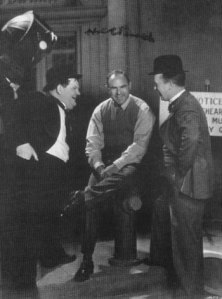
Hal Roach discussing a scene with Laurel & Hardy
On October 16, 1986, I had the good luck to attend a lecture by renowned silent film producer Hal Roach. The event was held at the National Film Theater in London, and was moderated by David Robinson. Robinson reviewed his long and illustrious career, which included producing films starring Harold Lloyd, Laurel & Hardy, and many, many other comedians. After the screening and discussion of several of his films, there was time for a few questions from the audience. During this Q&A session (on which I took notes), Roach, 94 at the time of this tribute, was asked to give a brief description of several of the important comedians and filmmakers he knew or had worked with—his comments about these men all the more interesting because of their terse and completely off-the-cuff nature.
The following opinions are Mr. Roach’s, not necessarily mine.
On Charlie Chase
“He was one of the funniest men I ever worked with—naturally funny, on and off the screen. He never drank on the set, but his problem was with booze. I remember coming to visit Charlie in the hospital—he’d go in to get dried out—and I never needed to know what room he was in…I would just walk down the hall and listen to where the laughter was coming from. Then I’d go in the room and he’d be in bed and the doctors and nurses would be all around laughing their heads off listening to him. Eventually he went to Mayo (Clinic) because his drinking had caused problems with his stomach—they had to make another hole or something…well, I got a call back from Mayo—they said this guy’s got the whole hospital laughing. When the doctors told Charlie he’d be making progress when he could ‘pass wind,’ he sent invitations out to the floor inviting everyone to his room on the day it happened. They finally sent him home and he only made it for two weeks without the booze. I think he died two months later. It was all very sad.”
On Buster Keaton
“Buster got his comedy from sight gags—he only had one expression, so that was limiting. It was harder for him because he only had the gags to make things funny.”
On Laurel and Hardy
“Most teams had the comedian and the straight man. Laurel and Hardy were both comedians and this was an advantage. You could do a gag, and have Laurel react to it, and then have Hardy react to what Laurel had just done, and if it was funny enough you could have Laurel react to Hardy’s reaction. So that was great, because you could get three laughs from just one joke.”
(On being asked why the team had a decline in quality after they left his studio)
“As a gag writer, Laurel was one of the best, but he had no sense of story or plot. So when he insisted he wanted to write his own plots, I had to let them go.”
On D.W. Griffith
“Griffith was one of the greatest directors ever. He had left Hollywood for the East and then returned. We often had lunch together. My friends told me that when he ate with me, Griffith would eat a good meal, but when we didn’t have lunch, he wouldn’t eat. So I started to have a lot of lunches with him. I never had any intention of his filming One Million B.C. I just wanted him to screen the rushes, which is what he did, and he’d call me and talk to me about what I’d shot. He died not long after the film was finished.”
On Charlie Chaplin
“Charlie was the greatest comedian of them all. When I first met Charlie, he was just like you and me, an ordinary guy. Then after he got famous, he started getting invitations to meet famous people, people like Churchill, and he’d tell them something—didn’t matter what he said—and they say ‘that’s brilliant!’ So before long Charlie started believing what everybody was saying, and that changed him. What the government did to Charlie was very sad. Charlie was never a communist…he never gave a penny to anybody!”
When the Q&A was over, Hal Roach looked over the crowd and said, “No more questions? I really am disappointed in all of you.” We looked around at each other in stunned consternation. Had someone said something to offend him? What had happened? Then Roach continued: “I really am disappointed because everyone always wants to me to talk about the past, no is ever interested in what I’m doing now. I have all these projects going on. But no, no one ever asks,” he said with a wink. “Goodnight everyone.”
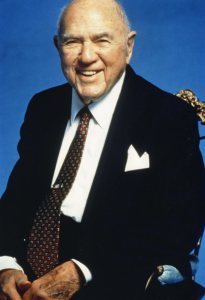
Hal Roach in his 90s
(from the collection of Dean McKeown)


February 13, 2014
Too Much Johnson Is Never Enough Orson: The ‘Lost Film’ of Orson Welles
One of the highlights of last fall’s silent film festival in Pordenone, Italy was the premier of Orson Welles’s ‘lost’ 1938 film, ‘Too Much Johnson.’ A lost silent film made by Orson Welles shot three years before Citizen Kane? As usual, when talking about the life and career of Orson Welles, some explanation is in order.
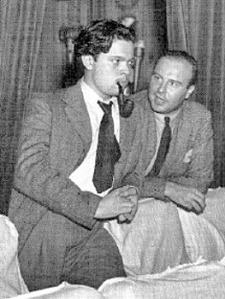
Co-founders of the Mercury Theater, John Houseman and Orson Welles
In 1938, Welles, along with his Mercury Theater co-founder John Houseman, decided to stage a play on Broadway with the lewd but memorable title, Too Much Johnson. The season before Welles and Houseman had staged a successful adaptation of the French play The Italian Straw Hat. Their newly renamed version of the play, Horse Eats Hat, was perhaps a cue to the audience to expect less wordplay and more horseplay than in the original production, and they must have seen a similar possibility to amend and change the serviceable, but dated farce, Too Much Johnson. which had been first produced in 1894, and written by William Gillette, a playwright and actor, better known to us for his stage portrayal of Sherlock Holmes.
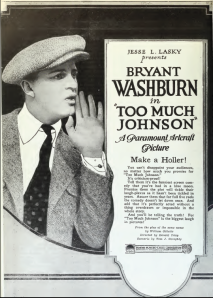 The first act of the play in its original form starts on a ship bound for Cuba, where we learn that Augustus Billings, a New York lawyer, is romancing another man’s wife by pretending he is a Cuban plantation owner. Meanwhile, there is another pair of lovers, Leonora and Henry, who must contend with an overbearing father, Faddish, who wants his daughter Leonora, to marry a plantation owner who really does have the name Johnson. As the ship sets sail for Santiago, the confusion of mistaken identities intensifies as they chase each other around the boat. In the second and third act, they reach Cuba, where after a series of misadventures, Billings, along with Leonora and Henry, escape the island, leaving Faddish and Johnson behind to plot revenge.
The first act of the play in its original form starts on a ship bound for Cuba, where we learn that Augustus Billings, a New York lawyer, is romancing another man’s wife by pretending he is a Cuban plantation owner. Meanwhile, there is another pair of lovers, Leonora and Henry, who must contend with an overbearing father, Faddish, who wants his daughter Leonora, to marry a plantation owner who really does have the name Johnson. As the ship sets sail for Santiago, the confusion of mistaken identities intensifies as they chase each other around the boat. In the second and third act, they reach Cuba, where after a series of misadventures, Billings, along with Leonora and Henry, escape the island, leaving Faddish and Johnson behind to plot revenge.
Welles liked this play well enough to consider staging in on Broadway, but with his ever- present itch to try something new, he came up with what was then a very original idea. He wanted to have a short film precede each act of the play that would function as part of the performance—the actors would be seen on the screen, and then, after the film was over, the same actors would walk unto to the stage to continue the drama—the film sequences and the live drama would function together with a unity of purpose for purpose of telling a story. The idea of linking film and theater into a combined narrative wasn’t completely new. In 1908 L. Frank Baum brought his Wizard of Oz characters to life using a combination of live actors, magic lantern slides and film in his stage production The Fairylogue and Radio-Plays, and there had been other previous productions in Europe with a similar ideas. But Welles planned to carry the concept much farther, completely integrating the elements of live theater, film and musical accompaniment into one seamless entity.
With this goal in mind, Welles gathered together the group of players scheduled to be in the stage production, and spent ten days filming scenes that would become the prologues for each act. The play was cast with actors from Welles’s repertory group, and included Joseph Cotten and a young Arlene Francis. Welles planned to edit together the footage in time for the play’s premiere, set for August 17 at Stony Creek, a small theater in Connecticut. If the play received good reviews during this ‘tryout,’ the next step would be a move to Broadway, where his idea of combining theater and film would be in full critical view. The cameraman for this project was Harry Dunham, an experienced documentary filmmaker who had filmed the Spanish Civil War and the Japanese invasion of China. Dunham was well suited for this assignment, which included largely improvisational, on-the-fly camera setups.
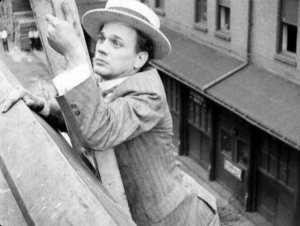 Welles and his crew first shot on the streets and roofs of Manhattan, and then went up the Hudson to Tompkins Cove quarry and filmed on locations that would double (with the help of a few rented palm trees) for Cuba, where the last part of the play takes place. After the filming was completed, Welles took the footage, and working in a New York hotel room, spliced together a workprint, including all the takes from each scene. This workprint ran a total of sixty-six minutes, from which about twenty minutes would have been edited together as a
Welles and his crew first shot on the streets and roofs of Manhattan, and then went up the Hudson to Tompkins Cove quarry and filmed on locations that would double (with the help of a few rented palm trees) for Cuba, where the last part of the play takes place. After the filming was completed, Welles took the footage, and working in a New York hotel room, spliced together a workprint, including all the takes from each scene. This workprint ran a total of sixty-six minutes, from which about twenty minutes would have been edited together as a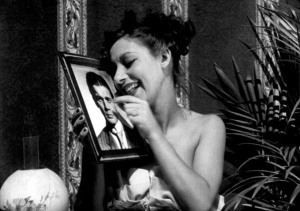 prologue for the first act, with shorter prologues used for the next acts. Each of these prologues would then preface the stage portion of the next act.
prologue for the first act, with shorter prologues used for the next acts. Each of these prologues would then preface the stage portion of the next act.
It was at this time when several factors came into play with would doom the project. The first is that Welles had not secured the film rights to the play, which were owned by Paramount Pictures, who had released a version of the story in 1920. Paramount notified Welles that they would demand a fee if any type of film—no matter how experimental—was used in the production of the play. A second problem was the Stony Creek Theater—where the play 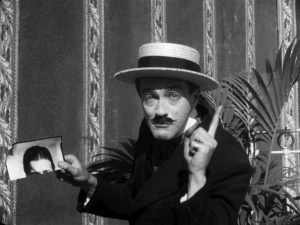 was scheduled for its tryout run—didn’t have the ability to project the film properly. Then Welles and Houseman suddenly found themselves in a cash flow problem—they had no more money to pay their actors, or buy film stock. The Mercury Theater had always run more on prestige and goodwill than on box office receipts, and with the costs of this film production quickly adding up, Welles and Houseman found themselves suddenly facing a huge budget deficit.
was scheduled for its tryout run—didn’t have the ability to project the film properly. Then Welles and Houseman suddenly found themselves in a cash flow problem—they had no more money to pay their actors, or buy film stock. The Mercury Theater had always run more on prestige and goodwill than on box office receipts, and with the costs of this film production quickly adding up, Welles and Houseman found themselves suddenly facing a huge budget deficit.
But perhaps the most pressing problem was that the play was set to premiere August 17. With no time for further editing or reshoots, with no money to pay off a film studio for the rights to an experimental project that might not work anyway, and with a venue that would not allow any simple way to project the film even if the first two conditions were met, the solution was obvious: Welles abandoned the attempt to use the filmed prologues. Shorn of these filmed interludes, or more accurately, never having them, Too Much Johnson premiered as scheduled, August 17.
As what happens to many (if not the majority) of the plays bucking for a chance to play in the very competitive New York theater circuit, Welles and his company decided the reception and critical reviews in the tryout were not strong enough to warrant a Broadway premiere. Too Much Johnson ended its short run at the Stony Creek, and the actors and staff moved on to other projects. John Houseman, in his autobiography, Run-Through, describes that Welles, angry and despondent at having to give up on his plans for the play, retreated to his hotel room and spent the week in bed. Years later, Houseman concluded the experience was Welles’s first real setback, his first significant ‘defeat’ in trying to mount an ambitious production. If so, it would set a precedent that would be repeated at a much larger scale in the years that followed.
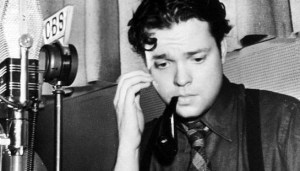 But for now, the ever-present demand from his numerous radio programs soon returned him to his workaholic habits. Two months later, on Halloween night, October 31, Orson Welles achieved international fame with his radio broadcast of H.G. Wells’ War of the Worlds, by staging the drama as if it was really happening and being covered by the news services. Riding on a surge of fame and celebrity in a few short years he had moved to Hollywood, and in 1941, made Citizen Kane, now regarded as one of greatest films ever made. However, the release of Citizen Kane angered the 1940’s version of The Powers That Be, and afterward Welles’s career began a slow, sputtering descent, eventually forcing him to scramble for work, and giving him perpetual funding problems for his projects.
But for now, the ever-present demand from his numerous radio programs soon returned him to his workaholic habits. Two months later, on Halloween night, October 31, Orson Welles achieved international fame with his radio broadcast of H.G. Wells’ War of the Worlds, by staging the drama as if it was really happening and being covered by the news services. Riding on a surge of fame and celebrity in a few short years he had moved to Hollywood, and in 1941, made Citizen Kane, now regarded as one of greatest films ever made. However, the release of Citizen Kane angered the 1940’s version of The Powers That Be, and afterward Welles’s career began a slow, sputtering descent, eventually forcing him to scramble for work, and giving him perpetual funding problems for his projects.
Decades later, as part of a revival of interest in his work, an effort was made to recover 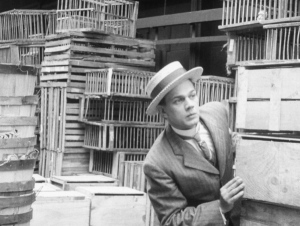 the workprint of Too Much Johnson, which had been put in a figurative (or perhaps literal) closet in 1938 and long forgotten. But no one could find any trace of the film. The best guess, made by Welles himself, was that the reels of nitrate film had burned in a fire in his house in Spain in the 1970s. Too Much Johnson was consigned to an ever-growing number of ‘what if’ projects by Welles that for various reasons, were never completed, a list that if compiled, would rival the collection of items seen at the end of Citizen Kane.
the workprint of Too Much Johnson, which had been put in a figurative (or perhaps literal) closet in 1938 and long forgotten. But no one could find any trace of the film. The best guess, made by Welles himself, was that the reels of nitrate film had burned in a fire in his house in Spain in the 1970s. Too Much Johnson was consigned to an ever-growing number of ‘what if’ projects by Welles that for various reasons, were never completed, a list that if compiled, would rival the collection of items seen at the end of Citizen Kane.
Decades after Welles’s death, by complete coincidence, Welles’s Too Much Johnson—a films designed by Welles to use the techniques of silent film to tell a story—turned up in a warehouse in Pordenone, Italy, a town where people come from around the world each year to attend a festival dedicated to silent film. Once it was determined that the film was indeed Welles’s ‘lost film,’ the reels were sent for restoration, and at the most recent festival, for the first time ever, the public was able to see this uncompleted project of Orson Welles.
As part of the film’s premiere, Paolo Cherchi Usai narrated the various sequences, along with piano accompaniment by Philip Carli. Before the film started, it was explained that we were watching a workprint, and were cautioned on having high expectations; after all we would clearly be watching a work in progress, with no intent for it to be a finished product. Helped both by Cherchi Usai’s knowledgeable narration and Carli’s expert ability to give us a music that matched the tone and context of what we were seeing, watching the film turned out to be a real delight. The experience was far more interesting than I had expected, and left me to ponder many ideas as I left the theater.
My first thought was that for film enthusiasts, watching a workprint, even one made as casually as this was, is a very rewarding experience. If you are interested seeing what such a print looks like, I recommend Criterion’s DVD of Night of the Hunter which includes a wonderful bonus track: Charles Laughton Directs “The Night of the Hunter,” a fascinating compilation of outtakes and behind-the-scenes footage.
Here is the link that discusses these outtakes and extra footage in more detail:
http://www.criterion.com/films/27525-the-night-of-the-hunter
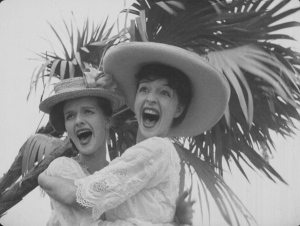 My second thought about watching the workprint of Too Much Johnson is how this footage demonstrates the importance and advantage of using professional actors. Award winning director Alexander Payne, a huge fan of traditional Hollywood filmmaking, has said during interviews that 80% of directing a film is casting the right actors for the parts. I completely agree with Payne’s observation and in this footage you can see what Payne is talking about, as we watch Joseph Cotten, Arlene Francis and the rest of the actors, run through their paces (even John Houseman shows up for a cameo). These men and women are have years of experience and training—they know how to use their hands and arms, they know how to hold an expression and how to move their body—this discipline is on display even in the most cursory of shots.
My second thought about watching the workprint of Too Much Johnson is how this footage demonstrates the importance and advantage of using professional actors. Award winning director Alexander Payne, a huge fan of traditional Hollywood filmmaking, has said during interviews that 80% of directing a film is casting the right actors for the parts. I completely agree with Payne’s observation and in this footage you can see what Payne is talking about, as we watch Joseph Cotten, Arlene Francis and the rest of the actors, run through their paces (even John Houseman shows up for a cameo). These men and women are have years of experience and training—they know how to use their hands and arms, they know how to hold an expression and how to move their body—this discipline is on display even in the most cursory of shots.
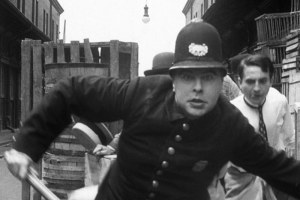
John Houseman, many years before becoming a Harvard law professor, was once a Keystone Cop
I’ve read speculations that what we saw was not a workprint, but rather the ‘outtakes’ from a more carefully edited print. In other words, a more pristine (read: masterful) print exists—or at one time existed—where one can see a more finished version of the film. This line of reasoning posits that this version of Too Much Johnson was perhaps the print Welles was thinking of when he talked about losing as a consequence of the fire at his house in Spain. The idea that a more ‘finished’ film by Welles is still ‘out there,’ is tantalizing—almost too tantalizing. It smacks of a need to frame the scenario into a pulp fiction quest, a version of Dashiell Hammett’s Maltese Falcon reconstituted into cans of nitrate film perhaps still lurking in a dark, forgotten corner.
However fanciful, I would not dismiss this idea out of hand. Instead, the theory could be tested by comparing the raw nitrate film, and carefully analyzing the progression of outtakes in the sequences, while also looking for splices and other signs of alteration. No mention of this was discussed during the festival, and as to further discussion of this possibility, I quote Carl Sagan: “Extraordinary claims require extraordinary evidence.”
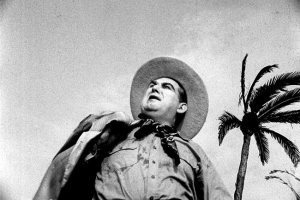 Other reviewers of Too Much Johnson wax enthusiastic about the photography, lighting and composition of the images, comparing them favorably to Citizen Kane, still four years away. While it’s certainly possible Welles was already thinking ahead about the use of dramatic angles and deep space, let’s remind ourselves that he was working with Harry Dunham, an experienced cameraman, who surely knew how to frame a shot. What I see in most of this footage is a professional use of location and natural light in order to show the actors to the best advantage, even in the most improvisational camera setup. My conclusion: While it’s clear that Welles was involved in at least some aspects of the photography of this production, let us give credit to Dunham for doing his best in what must have been very trying conditions.
Other reviewers of Too Much Johnson wax enthusiastic about the photography, lighting and composition of the images, comparing them favorably to Citizen Kane, still four years away. While it’s certainly possible Welles was already thinking ahead about the use of dramatic angles and deep space, let’s remind ourselves that he was working with Harry Dunham, an experienced cameraman, who surely knew how to frame a shot. What I see in most of this footage is a professional use of location and natural light in order to show the actors to the best advantage, even in the most improvisational camera setup. My conclusion: While it’s clear that Welles was involved in at least some aspects of the photography of this production, let us give credit to Dunham for doing his best in what must have been very trying conditions.
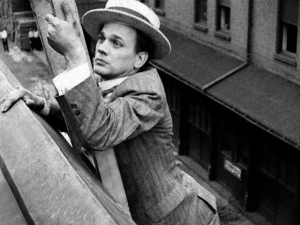 One of the joys of watching this film is simply the ability to see the New York skyline of 1938. When watching a finished film shot on location, this is always a side benefit, but most films are edited so tightly that the pleasure of taking your eye off the actors and just taking in a physical space is difficult. Not so with a workprint like this, with its multiple takes. Under this format, the viewer has the freedom to enjoy the scenery without a compelling need to pay attention to any narrative. This allows you to see what New York buildings been lost to time, or to try to identify what landmarks are still present.
One of the joys of watching this film is simply the ability to see the New York skyline of 1938. When watching a finished film shot on location, this is always a side benefit, but most films are edited so tightly that the pleasure of taking your eye off the actors and just taking in a physical space is difficult. Not so with a workprint like this, with its multiple takes. Under this format, the viewer has the freedom to enjoy the scenery without a compelling need to pay attention to any narrative. This allows you to see what New York buildings been lost to time, or to try to identify what landmarks are still present.
A persistent problem I have with the all the discussion of Welles being a famous filmmaker (a discussion revisited by the discovery of this film) is that I think his major contributions are not in film but rather in theater and radio drama. The lack of attention to his stage work is natural enough, since by its nature theater is an ephemeral art, and each audience will have the pleasure of watching a dramatic performance in a way that can’t be repeated. I think the real ‘lost,’ or to be more accurate, ‘forgotten’ works of Orson Welles are his radio dramas.
We have an extensive archival collection of Orson Welles’s radio performances, from his role as The Shadow, to his pioneering work on radio literary adaptations, to even exotica like the radio series he played as Harry Lime (presumably the episodes take place before the events of The Third Man). But the popular interest for his work in this field is minimal, which is part of a larger cultural disinterest in the pursuit of radio as a medium for telling stories. Most of the radio programs from the 1930s have fallen into public domain and appreciation in the United States for this form of dramatic presentation languishes for all but the most devoted niche market.
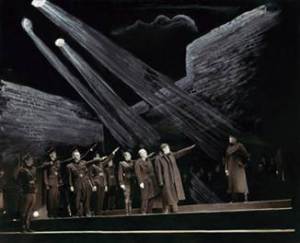 In the context of the ten days he spent shooting Too Much Johnson, let’s look at what else was on Welles’s plate for the spring and summer of 1938. The Mercury Theatre itself was finishing a run of the critically acclaimed adaptation of The Tragedy of Julius Caesar that evoked comparison to contemporary Fascist Italy and Nazi Germany. It premiered on Broadway on November 11, 1937 and this production extended into 1938. On March 14, 1938, the Broadway production moved from the Mercury Theatre to the National Theatre. The Mercury Theatre’s second production was a staging of Thomas Dekker’s Elizabethan comedy The Shoemaker’s Holiday, which attracted “unanimous raves.” It premiered on January 1, 1938, and ran to 64 performances in repertory with Caesar, until April 1. The third Mercury Theatre play was an adaptation of George Bernard Shaw’s Heartbreak House, which again attracted strong reviews. It premiered on April 29, 1938, and ran for six weeks, closing on June 11. It was the last Mercury Theatre production before the troupe began broadcasting on the radio as well. Orson Welles (with John Houseman) was the co-founder of the Mercury Theater, and although he certainly didn’t have day-to-day management duties, he at least had nominal supervision of all these projects.
In the context of the ten days he spent shooting Too Much Johnson, let’s look at what else was on Welles’s plate for the spring and summer of 1938. The Mercury Theatre itself was finishing a run of the critically acclaimed adaptation of The Tragedy of Julius Caesar that evoked comparison to contemporary Fascist Italy and Nazi Germany. It premiered on Broadway on November 11, 1937 and this production extended into 1938. On March 14, 1938, the Broadway production moved from the Mercury Theatre to the National Theatre. The Mercury Theatre’s second production was a staging of Thomas Dekker’s Elizabethan comedy The Shoemaker’s Holiday, which attracted “unanimous raves.” It premiered on January 1, 1938, and ran to 64 performances in repertory with Caesar, until April 1. The third Mercury Theatre play was an adaptation of George Bernard Shaw’s Heartbreak House, which again attracted strong reviews. It premiered on April 29, 1938, and ran for six weeks, closing on June 11. It was the last Mercury Theatre production before the troupe began broadcasting on the radio as well. Orson Welles (with John Houseman) was the co-founder of the Mercury Theater, and although he certainly didn’t have day-to-day management duties, he at least had nominal supervision of all these projects.
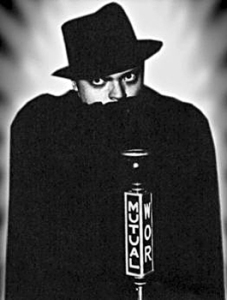 In addition to these numerous and complex theater productions, Welles was so in demand as a radio actor that he had to be taken from one studio to another by ambulance to get to the recordings in time. An partial list of these roles in the summer of 1938 include a weekly performance as The Shadow and a lead role in a CBS show titled First Person Singular, a series of radio dramas adapted famous literary novels. Soon to be renamed The Mercury Theater on the Air, Welles and his associates would rehearse the script, make editing changes, and perform the show—all in less than seven days. Sometimes the script would be written in hours, not days or weeks. John Houseman, in his autobiographies Run-Through and Unfinished Business, talks about Welles’s sudden decision to use Bram Stoker’s Dracula for next week’s show. To meet this impossible deadline, Welles and Houseman spent all night at Perkin’s restaurant in Manhattan tearing the pages out the Stoker’s novel so that they could condense and rewrite the story to get it down to a one-hour format. And seven days later they had to be ready for Treasure Island. The year of 1938 must have been a blur on the calendar for both Welles and his staff.
In addition to these numerous and complex theater productions, Welles was so in demand as a radio actor that he had to be taken from one studio to another by ambulance to get to the recordings in time. An partial list of these roles in the summer of 1938 include a weekly performance as The Shadow and a lead role in a CBS show titled First Person Singular, a series of radio dramas adapted famous literary novels. Soon to be renamed The Mercury Theater on the Air, Welles and his associates would rehearse the script, make editing changes, and perform the show—all in less than seven days. Sometimes the script would be written in hours, not days or weeks. John Houseman, in his autobiographies Run-Through and Unfinished Business, talks about Welles’s sudden decision to use Bram Stoker’s Dracula for next week’s show. To meet this impossible deadline, Welles and Houseman spent all night at Perkin’s restaurant in Manhattan tearing the pages out the Stoker’s novel so that they could condense and rewrite the story to get it down to a one-hour format. And seven days later they had to be ready for Treasure Island. The year of 1938 must have been a blur on the calendar for both Welles and his staff.
Here is only a partial list of the novels adapted in the summer and fall of 1938 for his radio drama series:
July 11 Dracula by Bram Stoker
(It was after this radio performance that Houseman says they started shooting Too Much Johnson)
July 18 Treasure Island by Robert Louis Stevenson
July 25 A Tale of Two Cities by Charles Dickens
August 1 The Thirty Nine Steps by John Buchan
August 29 The Count of Monte Cristo by Alexandre Dumas
October 2 Oliver Twist by Charles Dickens
October 16 Seventeen by Booth Tarkington
October 30 The War of the Worlds by H. G. Wells
November 6 Heart of Darkness by Joseph Conrad
(This list is from Jonathan Rosenbaum, “Welles’s Career: A Chronology”, in Jonathan Rosenbaum (ed.), Orson Welles and Peter Bogdanovich, This is Orson Welles. New York: Da Capo Press, 1992)
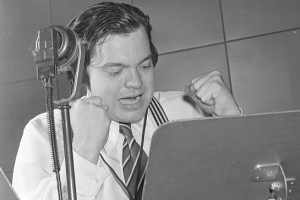 The number and variety of productions Welles was involved with in this period is breathtaking. Of course not every project he worked on was meant to be deathless prose, or even memorable. Much of what he did was simply use his wonderful, sonorous voice to give life to a script thrust in front if him, as he ran, breathless, from one gig to another. Todd Tarbox’s book, Orson Welles and Roger Hill: A Friendship in Three Acts includes an interview Welles gave many years later, describing this moment in his life: “I was making a couple of thousand a week, scampering in ambulances from studio to studio, and committing much of what I made to support the Mercury. I wouldn’t want to return to those frenetic 20-hour working day years, but I miss them because they are so irredeemably gone.”
The number and variety of productions Welles was involved with in this period is breathtaking. Of course not every project he worked on was meant to be deathless prose, or even memorable. Much of what he did was simply use his wonderful, sonorous voice to give life to a script thrust in front if him, as he ran, breathless, from one gig to another. Todd Tarbox’s book, Orson Welles and Roger Hill: A Friendship in Three Acts includes an interview Welles gave many years later, describing this moment in his life: “I was making a couple of thousand a week, scampering in ambulances from studio to studio, and committing much of what I made to support the Mercury. I wouldn’t want to return to those frenetic 20-hour working day years, but I miss them because they are so irredeemably gone.”
When placed in the context of all the other work Welles was doing in 1938, the ten days of shooting a silent film on the streets of New York must have felt like a summer vacation. And more importantly, it was an easy project to put aside as other more important projects loomed in the horizon.
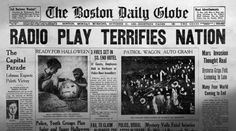 Looking at the impressive list of these radio dramas, of particular interest are the last two productions: If anyone remembers Welles’s radio work at all, it is because of his version of War of the Worlds, probably the most famous radio show ever done. And then in just the next week, the Mercury Theater group performed a story that Welles thought highly of, The Heart of Darkness. This was the first film project he attempted when given his contract at RKO and elements of the story found their way into Citizen Kane. Indeed, one could argue that our effort to peer into a heart of man who does not even understand himself is essentially an urbanized version of The Heart of Darkness.
Looking at the impressive list of these radio dramas, of particular interest are the last two productions: If anyone remembers Welles’s radio work at all, it is because of his version of War of the Worlds, probably the most famous radio show ever done. And then in just the next week, the Mercury Theater group performed a story that Welles thought highly of, The Heart of Darkness. This was the first film project he attempted when given his contract at RKO and elements of the story found their way into Citizen Kane. Indeed, one could argue that our effort to peer into a heart of man who does not even understand himself is essentially an urbanized version of The Heart of Darkness.
Some final thoughts: In the program notes, and in the subsequent reviews written about this film, the idea has been put out that Welles intended to have three prologues, one to start each act. However, Houseman in his memoirs writes that Welles planned two filmed prologues, not three. In reading the theater script and watching the workprint, I think Welles planned to condense act two and three into just one act, and have only a prologue before each act. Since part of the workprint includes a duel (alluded to but not shown in the original play), the possibility exists of having a third filmed interlude near the end of Welles’s adapted version. So this technically gives us two prologues, not three, and then perhaps the possibility of a filmed sequence right before the climax of the farce. This intent could perhaps be verified by examining an actual script used at the Stony Creek Theater performance (assuming this script survives) and this would help us better understand how Welles planned to integrate his filmed interludes into the play.
During the film’s premiere in Pordenone, and in subsequent discussions about the film, the theory was put out that Welles designed these prologues as ways of simplifying and condensing the expositional elements of the play so each act could ‘hit the ground’ running and plunge quickly into the story. After reading the original theater script of Too Much Johnson I am convinced this idea is wrong, or at least misleading. If anything, the prologues add complexity to the story, by showing us the events that happened just before the ship sails off to Cuba. In the theater script, much of the backstory is given to us in a quick (if dramaturgically awkward) fashion by Billings, who explains to a befuddled purser why all the involved parties are on board. In a few short passages, we have all we need to know about all the characters.
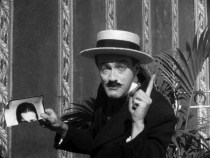 I think Welles had a simple and much better reason to do this—a filmed prologue was going to be the twist, the ‘new’ thing that made his play different from anyone else’s. He had been the first to put ‘voodoo’ in Macbeth; he had been the first to stage Julius Caesar in the setting of a contemporary fascist state. So the challenge for him was to figure out what could he do with Too Much Johnson, something so interesting that everyone had to see it. In reading the script of the play, a thought may have come to him (it did to me)
I think Welles had a simple and much better reason to do this—a filmed prologue was going to be the twist, the ‘new’ thing that made his play different from anyone else’s. He had been the first to put ‘voodoo’ in Macbeth; he had been the first to stage Julius Caesar in the setting of a contemporary fascist state. So the challenge for him was to figure out what could he do with Too Much Johnson, something so interesting that everyone had to see it. In reading the script of the play, a thought may have come to him (it did to me) 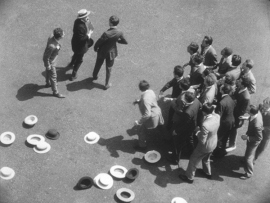 that there were elements of the play that functioned better in the style of silent film slapstick comedy than as theatrical farce. At some point while mulling over this script, the idea must have struck him —why not include silent slapstick comedies, and dramatically integrate them into the production? Nobody had done that before. Another first, another Orson Welles original.
that there were elements of the play that functioned better in the style of silent film slapstick comedy than as theatrical farce. At some point while mulling over this script, the idea must have struck him —why not include silent slapstick comedies, and dramatically integrate them into the production? Nobody had done that before. Another first, another Orson Welles original.
And he was completely right to think this. Orson Welles’s talents were in the direction of adaptation, rather than in writing or developing his own material. I say this not as a criticism, but rather as an explanation of one of Welles’s greatest gifts—the ability to see how to find an angle that would take something old and make it new. When he was forced to abandon the idea to include these films as part of performing Too Much Johnson, Welles knew more than anyone that the play would revert back to being a creaky, outdated, turn-of-the-century farce. After the short run at Stony Creek, which Houseman described as ‘trivial, tedious and underrehearsed,’ any thought of transferring the production to Broadway was abandoned, and after the last performance, the play was quickly forgotten, becoming merely a odd footnote to Orson Welles’s career.
In regard to plays performed with filmed interludes—I have seen two plays with film incorporated into live theater, the musical Hollywood Boulevard, and a drama, Hitchcock Blonde. In my opinion, neither attempt at mixing stage with filmed images worked for the simple reason that the moving image was always more compelling to the eye than the static stage. Just when you hoped you could sit back and enjoy the movie, the lights went on and the actors started their business. But to be fair, I can’t compare these modern attempts to blend film and theater to what Welles did—his prologues were different and more complex, not only because the actors on the screen were the same actors who were doing the stage performance. Welles was trying for a truly integrated attempt to integrate the scenes into the play, which leads to my final thought:
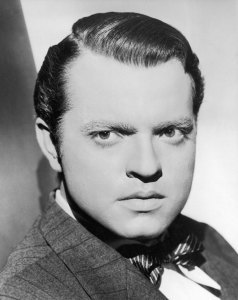 After watching these sixty-six minutes of film, I can’t think of a greater honor to Welles than for someone to take the material here and fashion something new out it. Welles spent his entire career updating versions of other people’s work (Shakespeare being the most obvious), so ‘re-purposing’ this material would be a very Wellesian proposition. There would be two obvious directions for this—one would be to cut together these dailies and fashion the prologues as he had planned so that the play itself could be performed as he originally intended. The other idea would be to take the footage and create a new piece of silent film with no need to connect itself with the Gillette play; with the right editing and judicious use of intertitles, an ambitious editor could put together a completely new story. It’s been done before in the silent film world, using stars such as Chaplin—this new story could be a slapstick silent film done under the style of Mack Sennett, starring the able and forever young cast of the Mercury Theater. And while watching for this updated version of Too Much Johnson, we can always hope for other plays, films and radio dramas by artists who are inspired by what Welles was able to achieve. Inspired by, but not a slave to his work, because above all there is always the dictum that Welles gave to himself: Always find a way to make what you are doing different, unique, and your own.
After watching these sixty-six minutes of film, I can’t think of a greater honor to Welles than for someone to take the material here and fashion something new out it. Welles spent his entire career updating versions of other people’s work (Shakespeare being the most obvious), so ‘re-purposing’ this material would be a very Wellesian proposition. There would be two obvious directions for this—one would be to cut together these dailies and fashion the prologues as he had planned so that the play itself could be performed as he originally intended. The other idea would be to take the footage and create a new piece of silent film with no need to connect itself with the Gillette play; with the right editing and judicious use of intertitles, an ambitious editor could put together a completely new story. It’s been done before in the silent film world, using stars such as Chaplin—this new story could be a slapstick silent film done under the style of Mack Sennett, starring the able and forever young cast of the Mercury Theater. And while watching for this updated version of Too Much Johnson, we can always hope for other plays, films and radio dramas by artists who are inspired by what Welles was able to achieve. Inspired by, but not a slave to his work, because above all there is always the dictum that Welles gave to himself: Always find a way to make what you are doing different, unique, and your own.


May 5, 2013
Roger and Me: An Almost Perfect London Walk
Roger Ebert’s death on April 4, 2013 has produced—for his vocation—a degree of sympathy and support that is perhaps unprecedented (since when have so many people been emotionally affected by the death of a film critic?). While some of this reaction is related to the Internet and the rise of social media (when Pauline Kael died in 2001, Facebook was three years away from its launch), one should not underestimate the personal connection Roger Ebert had with many of his readers and supporters—if you had the slightest interest in film, you knew who this person was. You may not have always agreed with his opinions and reviews, but it was impossible not to respect his effort to give each film a clear and honest appraisal. In looking back at history, I’d have to go back to Will Rogers to find a American writer who was better able to use a variety of media (today we’d call it convergence) in order to maintain high visibility, and do it not for the purpose not to primarily serve his own career, but instead to promote causes and interests he thought were important. That puts Roger in very select company.
Roger Ebert was at heart a newspaperman, a reporter in the best tradition of his fellow Sun-Times columnist Mike Rokyo. By accident or intent (I think much of this was in place before Roger ever got to Chicago), Roger followed Rokyo’s formula for success:
1) Write about what interests you, wherever that takes you.
2) Don’t show off—use smaller words when they work just as well as longer ones.
3) On the other hand, don’t play dumb, respect the intelligence of your reader to either know what you are saying or have the gumption to look up your reference and learn something.
Ebert’s writing aimed for clarity and simplicity, but it’s a mistake to think it was not learned; his reviews and articles over the years reflected an expertise about many topics and this knowledge would often add that extra touch that would elevate what he wrote from the ordinary to the special. And as someone who had been trained as a sports reporter and was interested in more than just movies, he loved doing work unrelated to his main job as a film critic. In particular, in 1986 he cowrote a guidebook with his friend Daniel Curley titled: A Perfect London Walk.
The book is many things, but mostly concerns a walking tour in northern London starting west of Hampstead Heath and finishing near Highgate Cemetery. I found his book in a London bookstore in 1986, and was immediately captured by its combination of wit and sense of purpose. The guidebook’s ability to connect literary references to real locations acts as a ‘literary buoy,’ if you will, allowing the reader to see, taste and smell the location that inspired the poem or story, thus enjoying the author’s creation all the more. A Perfect London Walk then, is much more than a guidebook, it is also a sort of manifesto of Roger Ebert’s interests concerning a time and place in English history and how this place influenced its local writers. Although I had never met him, in reading this book and then reading more about him from other sources, I found we had much in common. Roger and Me–old friends, even though we had never met.
Roger was born and raised in Urbana, Illinois, only a few hours from my hometown. We grew up both huge science fiction fans, we both wrote for fanzines, we both worked for local newspapers in our hometowns, we both went to local colleges in our hometowns after high school. We both were readers, and loved fiction, especially British literature. After graduating from the University of Illinois, Roger went on to Chicago, while I went to medical school at the University of Illinois at Urbana. From there our paths deviated a bit, but there would always be these common connections, and above all a love of movies.
Roger and Me. After his death, I have discovered there are a lot of Me’s out there. There is the Me of documentary filmmaker Michael Moore, who Roger championed in the late 1980s. There is the Me of Werner Herzog, a German director who Ebert praised and promoted, even during times when Herzog was having difficulty getting funding for his next film. There is the Me of thousands of readers who appreciated his frankness and passion in his writing and how he bravely kept reinventing his life. There are too many Me’s to try and list, but you know who you are.
A few years ago, I was in London and decided to repeat the walk and see how it had changed. Since by now Roger was ill, I resolved to send him a letter describing my walk. On this visit, I took photos to show how the walk had changed from the year it was documented in his book, but then, to reinforce how central the heath is to a certain chapter of British literature, and not be slavishly repetitious to what he had done, I came up with a new set of quotes from literary sources that had a connection to Hampstead Heath. A version of this ‘travel essay’ went out as a Christmas Greeting to Roger and Chaz the year of my revisit. Then I filed a copy of it away and moved on to other things.
This month, sad like everyone else at hearing the news of Roger’s passing, I thought about the Hampstead Heath and wondered if people were still using his guidebook. I checked Amazon.com and found the price of a used paperback of A Perfect London Walk going for $387.82 with one seller at more than a thousand dollars. I think it is safe to say this book is in need of a both a revision and a reprint. The cowriter of this book, Daniel Curley (who was Roger Ebert’s professor at the University of Illinois) tragically died from a traffic accident in 1988, so there will be no simple way for this to happen.
With this in mind, I have adapted the text of my letter to Roger to make it accessible to readers for which the guidebook will not be available, but are still interested in British literature and London history. In other words I’m posting this ‘travel essay’ as a thank you to Roger and in the hope of like-minded people reading this and becoming interested enough to include this walking tour on their next trip to England. Perhaps this account will produce one more Me in already a long and loyal list of Roger and Me’s. So here is my letter, addressed to Roger, but really going out to those who know him or have been touched by him in some way.
Dear Roger Ebert,
I’m titling this letter, “An Almost Perfect London Walk.” The only thing that kept this walk from being perfect is that you and Chaz were not part of the trip. While on the walk, I talked to a local who informed me that he’s met plenty of people with the same idea—that is, they told him they were going to write to you after their day on the heath. For all I know you might get thirty of these a day. Maybe you have a form letter to respond to the exigency of responding to this particular fan letter. If so, please file this account in the ‘Roger Ebert’s Perfect London Walk Response Letter’ genre that you have unwittingly created, and I can only hope that because no two heath walks can be the same, no two heath walk letters can be the same.
On the morning of my walk, I start at Russell Square. While in London as a student, this park became my second home, and I always go back to it when I return. There are hundreds of squares and parks in London, but Russell Square has some quiet simplicity of function and use that calms my nerves and yet still gives me energy. For me, all London journeys somehow start from a park bench at the center of Russell Square
I don’t remember where I bought your book, probably at Foleys, or one of the downtown London bookstores. I used it to take my original Hampstead Heath trip but since it has been more than two decades since your book was published, it’s going to be interesting to see what has changed and what has stayed the same since the 1980s.
Taking the Northern Line to Belize Park, I pop out of the escalator and into daylight on Haverstock Hill.
Turning right, Colonel Sanders is there to greet us, a new sign, but his iconic smile of Southern hospitality unchanged.
“The man is who is tired of London is tired of looking for a parking place.”
Paul Theroux
Walking past the George, I arrive at Hampstead Green and almost miss the turn because of construction. Signs explain that St. Stephen’s Church is undergoing a major renovation. The Royal Hospital also show signs of renovation, although the most interesting part of this walk are the signs on the security fences. “No to loss of 30 acute beds.” “Local Press Gagged and Gutless.” and “Save our NHS” are among the many Hyde Park-like banners of protest and dissension.
of construction. Signs explain that St. Stephen’s Church is undergoing a major renovation. The Royal Hospital also show signs of renovation, although the most interesting part of this walk are the signs on the security fences. “No to loss of 30 acute beds.” “Local Press Gagged and Gutless.” and “Save our NHS” are among the many Hyde Park-like banners of protest and dissension.
Past the hospital is the street leading to Adolph Huxley’s home. Not having the time to dwell on Huxley, I turn the corner and walk up to the plaque commemorating George Orwell. I reflect on the thought that the two faces that have greeted me unchanged in twenty years are Colonel Sanders and George Orwell. I don’t know whether to shoot an elephant or ask for Extra Crispy.
The plaque commemorates the bookstore that Orwell worked in for two years, 1934-35. He would use the experience to write Keeping the Aspidistra Flying, a novel about a man working in a bookstore. It was about as upbeat as he was ever going to get, and those of you who like Orwell and bookstores, this is the one book I recommend of his that gives you some ray of hope for the human condition.
Passing the South End Road, I approach Keats Grove.
 Having spent much time in Keat’s house on my first visit, on this trip it’s pleasant to just sit on the bench and savor the sunshine and flowers. This beautiful fall day seems an impossibly long way from his melancholy description of a garden from “Ode to a Nightingale” -
Having spent much time in Keat’s house on my first visit, on this trip it’s pleasant to just sit on the bench and savor the sunshine and flowers. This beautiful fall day seems an impossibly long way from his melancholy description of a garden from “Ode to a Nightingale” -
I cannot see what flowers are at my feet,
Nor what soft incense hangs upon the boughs,
But, in embalmèd darkness, guess each sweet
Wherewith the seasonable month endows 
The grass, the thicket, and the fruit-tree wild;
White hawthorn, and the pastoral eglantine;
Fast-fading violets cover’d up in leaves;
And mid-May’s eldest child,
The coming musk-rose, full of dewy wine, The murmurous haunt of flies on summer eves.
Leaving Keat’s house, I discover Keats Pharmacy, no doubt empty of hemlock and dull opiate, but perhaps stocked with the latest antibiotics to fight tuberculosis.
The preliminary attractions are over, it’s time for the main event, the walk through Hampstead Heath-
“The moon was full and broad in the dark blue starless sky, and the broken ground of the heath looked wild enough in the mysterious light to be hundreds of miles away from the great city that lay beneath it. The idea of descending any sooner than I could help into the the heat and gloom of London repelled me. The prospect of going to my bed in my airless chambers, and the prospect of gradual suffocation, seemed, in my present restless frame of mind and body, to be one and the same thing. I determined to stroll home in the purer air by the most roundabout way I could take; to follow the white winding paths across the lonely heath; and to approach London through its most open suburb by striking into the Finchley Road, and so getting back, in the cool of the new morning, by the western side of the Regent’s Park.”
Wilkie Collins, The Woman in White
 At the entrance to the heath, there is a pond where children are feeding the ducks.
At the entrance to the heath, there is a pond where children are feeding the ducks.
A few yards later, I arrive at the next pond, in time to see a dog leap in the water and in a fevered display of canine frenzy, charge after some goslings. The mother goose, looking like a giant condor with its outstretched wings, comes to their rescue. The dog, outsized, outmatched and outmaneuvered, beats a hasty and embarrassing retreat back to dry land.
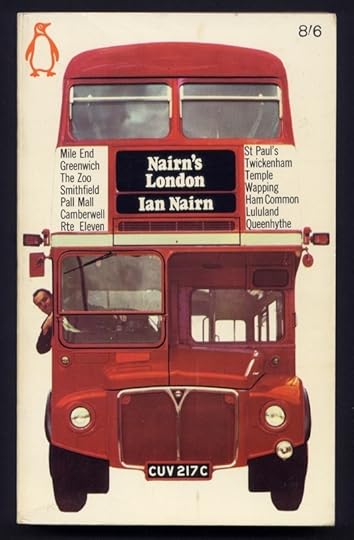 Now we come to the ‘spookier’ part of the walk, at least described by Ian Nairn. Roger Ebert’s dedication to London’s history is illustrated by his interest in keeping this London newspaper columnist in print.
Now we come to the ‘spookier’ part of the walk, at least described by Ian Nairn. Roger Ebert’s dedication to London’s history is illustrated by his interest in keeping this London newspaper columnist in print.
Here’s a link, in Roger Ebert’s own words, about Ian Niarn:
http://www.rogerebert.com/rogers-journal/nairns-london-an-introduction
Dead bodies are not infrequently found floating, or at the bottom; according to the police, corpses are not uncommon anywhere on the heath. So far I am glad not to have encountered one.
The Westminster Gazette, 25 September Extra Special
The Hampstead Horror–Another Child Injured
The “Bloofer Lady”
We have just received intelligence that another child, missed last night, was only discovered late in the morning under a furze bush at the Shooter’s Hill side of Hampstead Heath, which is perhaps, less frequented than the other parts. It has the same tiny wound in the throat as been noticed in other cases. It was terribly weak, and looked quite emaciated. It too, when partially restored, had the common story to tell of being lured away by the “bloofer lady.”
-Bram Stoker, Dracula
 I look for the ‘leafy corridor’ of trees mentioned in your guidebook. It’s hard to be sure, since all of these trees are magnificent collections of gnarled bark and knobby roots. They could be old whales, beached on the heath, showing their barnacles and scars. Maybe they are the last of the family of Ents, left over from Middle-Earth. Or maybe they are Hollywood ‘tree actors’ ancient relics from such films as The Wizard of Oz and Babes in Toyland, retired and put out to pasture, literally.
I look for the ‘leafy corridor’ of trees mentioned in your guidebook. It’s hard to be sure, since all of these trees are magnificent collections of gnarled bark and knobby roots. They could be old whales, beached on the heath, showing their barnacles and scars. Maybe they are the last of the family of Ents, left over from Middle-Earth. Or maybe they are Hollywood ‘tree actors’ ancient relics from such films as The Wizard of Oz and Babes in Toyland, retired and put out to pasture, literally.
I come out of the grove and start my ascent to Parliament Hill. Along the way are scavengers with metal detectors, looking for lost rings and coins. There are worse ways to spend a Sunday afternoon, and you certainly get more exercise than by just fishing.
I arrive at Parliament Hill and try and pick out the famous buildings from the skyline.
“You never go to the country?” he said, feeling unable to join her in her praise of London, though it was intelligible enough to him.
“I go now and then as far as Hampstead Heath,” Eve answered with a smile. “If it’s fine I
shall be there next Sunday with Patty Ringrose.”
Hilliard grasped the opportunity. Would she permit him to meet her and Miss Ringrose at Hampstead? Without shadow of constraint or affectation, Eve replied that such a meeting would her give her pleasure: she mentioned place and time at which they might conveniently encounter.
George Gissing, Eve’s Ransom
 I come to a grove of trees. Roger called this the tumulus, and referred to it as the centerpiece of the walk. I completely agree; there is a certain calmness and comfort here that reminds me of a wilder version of Russell Square. If the head of Hampstead Heath is Parliament Hill, this section of oaks might be its heart.
I come to a grove of trees. Roger called this the tumulus, and referred to it as the centerpiece of the walk. I completely agree; there is a certain calmness and comfort here that reminds me of a wilder version of Russell Square. If the head of Hampstead Heath is Parliament Hill, this section of oaks might be its heart.
Surrounding the grove is a ring of benches. I can’t think of a better place in the world to read a book. A woman on a bench eyes me as I walk by.
She has a green-and-white Penguin in her hands…you sense it’s something important–you wouldn’t come all the way out here just to read throwaway stuff. This is where you’d peruse Orwell’s Burmese Days, or catch up on your H.G. Wells…like his Kipps. I’ve always meant to read that book. Or something by Kipling, or D.H. Lawrence. I have to come back on this list and start on my list.
“Be warned the odds are excellent you will get lost.”
from Ebert and Curley, A Perfect London Walk
Exactly. This is where I lost Roger’s trail twenty years ago, and where I lose it again today.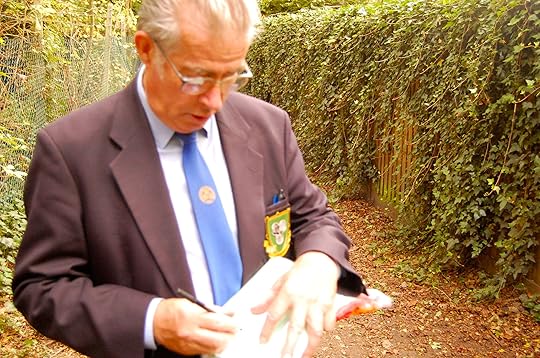 I pick out a man who knows where he’s going and meet J.E. Jarvis, a frequent walker and local expert on the heath. Jarvis is an historian with training in geology, and happily gives me a personal tour of this section of the park.
I pick out a man who knows where he’s going and meet J.E. Jarvis, a frequent walker and local expert on the heath. Jarvis is an historian with training in geology, and happily gives me a personal tour of this section of the park.
We walk over an area where the ground is raised, giving the appearance of some subtle  seismic affair in the distant past. Jarvis explains that this was a line of earthworks built by the Saxons to mark their territory.
seismic affair in the distant past. Jarvis explains that this was a line of earthworks built by the Saxons to mark their territory.
How many times an hour do we unknowingly cross lines and boundaries whose existence is owed to dramatic battles and events of the distant past? It’s one reason hiking is so much fun in England, the parks, streets, footpaths, have been touched, molded, and changed by the history of countless generations.
I show Jarvis Roger’s book. He laughs and says, “I just saw this book earlier today.”
He must be confused. The book is out of print. I hold it up for him: “You can’t mean this book, can you?”
He studies the cover. “Yes, that’s the one. I’ve seen it lots of times before.”
“I was going to send Mr. Ebert a letter about our walk.”
Jarvis nods with a sly smile. “That’s what the other people said they were going to do.”
“They were here earlier today?”
“Yes.”
I shake my head in surprise. “That’s hard to believe. On the same day, too.”
Jarvis shrugs. “Maybe he gets these letters all the time.”
So much for my original idea. I can only think of retreat and surrendering to a pint of bitter. “Can you show me to the Spaniard’s Inn?”
He puts us on a heading away from the heath. “This is an especially nice walk to the pub. You just follow this to the road, then the inn.”
I say goodbye to Jarvis, who is on his way to a geological meeting. I then attempt the most difficult act of the entire day–crossing Spaniard’s Road. Traffic is unrelenting and I give up and walk a block down so that I can cross at a light.
I’m happy to report that the Spaniard’s is doing quite well, thank you. The inn has taken to heart Roger’s warning about the evils of modernization–and while upgrading some elements such as the backyard tea garden–inside the building they have done everything they can to maintain the tradition. The front room is unchanged from my visit twenty years before and I’d like to think unchanged from when Dick Turpin peered out the window and sized up his next mark, and he watched the traffic squeeze by the toll house.
I’m tired and ready for a nap. Even though it’s reasonably early in the afternoon, the October light is already fading. Ambitious thoughts of completing the walk by a tour of Highgate cemetery fly away with the speed of Dick Turpin’s magical horse, Black Bess. October is a nice month to visit the heath, but with the diminished daylight, you have to pick your spots. Highgate will have to wait for another trip. Which is fine, because as Roger writes in his book, one can sample as much or as little of this walk as you want. Finishing my pint at the Spaniard’s, I take a bus back to Highgate, and the tube back to the West End.
In my original letter, I finished the note by giving holiday greetings and hoped I would see them soon–I did in fact see Roger at his annual Ebertfest in Champaign, Illinois, but by then he was not able to talk and with the general mayhem of the festival all I could do is say hello.
And that was fine. I have many memories of Roger, one of which is this ‘almost perfect London walk,’ and I know some part of him will be there for me every time I go back and walk it again.


February 10, 2013
Wonderful Life: Exploring the Vienna Trades
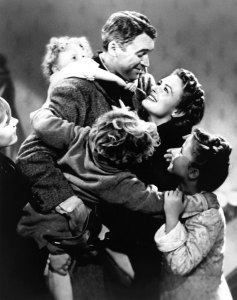 In my last blog, I detailed my trips to Hungary in my attempt to learn more about the The Death of Drakula, the first film in which Dracula was used as a character. My time in that country convinced me of the need to travel to Austria to further my research. There was even a remote chance that the film might exist in some obscure archive, perhaps with some other name. Little did I know that my trip would tie together for me such disparate entities as defunct film studios and soft tissue invertebrates to a Frank Capra film.
In my last blog, I detailed my trips to Hungary in my attempt to learn more about the The Death of Drakula, the first film in which Dracula was used as a character. My time in that country convinced me of the need to travel to Austria to further my research. There was even a remote chance that the film might exist in some obscure archive, perhaps with some other name. Little did I know that my trip would tie together for me such disparate entities as defunct film studios and soft tissue invertebrates to a Frank Capra film.
With this goal in mind, I traveled to Vienna to spend a few days at the Vienna film archive. After hearing my story about trying to track down the film, the staff at the archive all smiled and shook their heads—sadly, they knew of no print in any archive in their country that had any remote connection to Dracula or vampires of any kind.
 But they did guide me to their library, and opened my eyes to a secret world connected to movies—a world that has coexisted with film almost from the start, but is largely invisible to the general public. This is world with its own rules, its own players, major and minor, and is chockablock with information and details for film researches of all kinds. What I’m talking about, in America, is known as ‘the trades.’
But they did guide me to their library, and opened my eyes to a secret world connected to movies—a world that has coexisted with film almost from the start, but is largely invisible to the general public. This is world with its own rules, its own players, major and minor, and is chockablock with information and details for film researches of all kinds. What I’m talking about, in America, is known as ‘the trades.’
The Trades…magazines designed and written not for the general public, but for industry professionals. One of the many ironies of film research is that because paper is inherently simple to make copies of, easy to save and cheap to store, for many lost films we know more about the details on how a movie was made, where it played and how it received…than we do about the film itself.
One such film historian is Mary Mallory, who uses trade magazines and other primary sources to write about Los Angeles during the classic studio era. Her particular area of interest is the history of the Hollywood sign itself. You can read updates in her blog, The Daily Mirror.

Hunting for a particular lost silent film is like going fishing with the idea that you’re going to pull up something like this prehistoric coelacanth. But we can always hope.
This puts film historians in the position of being archeologists looking for a presumed extinct animal. We know its habits, can track its spoor to see where it’s been, but until we can see it in front of us, we can only take an educated guess at what it looked like. Until the creature is proved to not be extinct, like the coelacanth fish pulled from the deep waters of the Indian Ocean, it’s the best we can do.
Researching trades, newspapers, and old documents has become its own specialty, full of discoveries and fascinating information that informs our present world. In my time going through the Vienna trade magazines and newspapers, I did find a few scanty references to the Death of Drakula, screening times, and comments about the film about to be released, and in the contemporary papers, screening times. I did not find any reviews for the film, which would have been a helpful way to assess what kind of impact the film made when it was released. So my time there was meager in terms of finding out more about The Death of Drakula.
But as they say, it’s the journey that counts, not the destination, and what really impressed me in reviewing both ‘the trades’ and the newspapers of the era, was the realization that for the teens and twenties, there was an explosion of the interest of movies as both an art form and a new kind of entertainment. Looking at the general newspaper ads as a time traveler in their machine might look at the passing years rush by, by winding the microfiche reel quickly from one year to the next, the film ads start with a few scattered articles and quickly grow to become one of the featured players in the major newspapers.
The trades take a similar leap of quality and quality; quickly they rise from a crude and 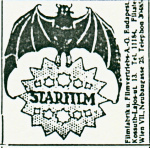 meager origin to become a classy and sophisticated product. And one of the first things one sees why perusing the trades are the trademark logos for all the production companies. Brand after brand after brand, pages of them. By golly there were a lot of production companies back then, making a lot of movies. It got me thinking of an evolutionary metaphor to describe what I was seeing–that is, of a new technology opening up a niche, and all these entities, popping up like mushrooms, taking a foothold in a new environment.
meager origin to become a classy and sophisticated product. And one of the first things one sees why perusing the trades are the trademark logos for all the production companies. Brand after brand after brand, pages of them. By golly there were a lot of production companies back then, making a lot of movies. It got me thinking of an evolutionary metaphor to describe what I was seeing–that is, of a new technology opening up a niche, and all these entities, popping up like mushrooms, taking a foothold in a new environment.
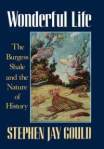 My thoughts of this comparison were cemented later, when I read Steven Gould’s Wonderful Life: The Burgess Shale and the Nature of History. Gould’s thesis is simple: Chance plays a much larger role of success and failure in biological evolution that anyone could have guessed. The reason for this conclusion was his survey of the fossil record from the Burgess Shale, an area of British Columbia that has especially well preserved fossils from about 500 million years ago. All of the fossils showed animals well adapted to their environment, but why did most of these animals become extinct, while others survived? Gould proposed a thought experiment: If you could wind back time, just like the angel Clarence did in the Frank Capra film It’s a Wonderful Life, and play the tape of life forward again, you would get a completely different set of conditions that would cause events to happen in ways impossible to predict. It’s called the Contingency Theory, and it’s quickly become one the the dominant scientific philosophies being used to explain how nature works.
My thoughts of this comparison were cemented later, when I read Steven Gould’s Wonderful Life: The Burgess Shale and the Nature of History. Gould’s thesis is simple: Chance plays a much larger role of success and failure in biological evolution that anyone could have guessed. The reason for this conclusion was his survey of the fossil record from the Burgess Shale, an area of British Columbia that has especially well preserved fossils from about 500 million years ago. All of the fossils showed animals well adapted to their environment, but why did most of these animals become extinct, while others survived? Gould proposed a thought experiment: If you could wind back time, just like the angel Clarence did in the Frank Capra film It’s a Wonderful Life, and play the tape of life forward again, you would get a completely different set of conditions that would cause events to happen in ways impossible to predict. It’s called the Contingency Theory, and it’s quickly become one the the dominant scientific philosophies being used to explain how nature works.
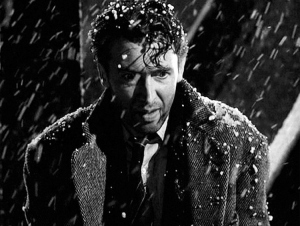
“Clarence, we’re going to do this again, and again? Oh my God…I’m in another version of Groundhog Day!”
In the Capra film, Clarence made George Bailey suffer in order to prove a point (to make George Bailey see that he really had a wonderful life), but if he wanted to make Jimmy Stewart’s character really miserable, he could have taken him back to when he was never born, and then played the tape of life forward ten, twenty, fifty times or more. In each case he would have shown to George a Bedford Falls completely different from any of the others. And the most interesting part of this thought experiment is that in some scenarios that lacked George Bailey, Bedford Falls might have turned out better than if he’d lived.
Maybe only once or twice out of fifty times–after all we are not discounting the fact that  George did good things. But two or three times is enough to make ‘luck’ enter into the picture. And that’s what the contingency theory is all about. It’s not good enough to be the best at what you do, being lucky counts for more than we’d ever care to admit. Or to throw another geological event into the discussion, if a large meteor hadn’t stuck the coast of Mexico 66 million years ago, this might still be the age of dinosaurs, and we mammals might still be scurrying around picking up their scraps.
George did good things. But two or three times is enough to make ‘luck’ enter into the picture. And that’s what the contingency theory is all about. It’s not good enough to be the best at what you do, being lucky counts for more than we’d ever care to admit. Or to throw another geological event into the discussion, if a large meteor hadn’t stuck the coast of Mexico 66 million years ago, this might still be the age of dinosaurs, and we mammals might still be scurrying around picking up their scraps.
What does this have to do with the Vienna Trades? Just look at all the production companies around in the 1920s:
These trademark logos just kept coming and coming, and are omnipresent in every issue. These ‘brands’ are more than just visually interesting, they remind us how many companies were making movies in the 1920s. Here’s another page:
All these defunct companies…sort of like looking like…fossils.
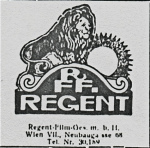 To carry this archeologist/extinct species analogy to its conclusion, in the 1920s, the technology of film was still brand new–less than a generation old, and these production companies, were busy expanding their cultural ‘niche.’ Before long there would be a winnowing of resources, and consolidation would take place. But for now there was plenty enough room for everyone, and the field was crowded with hopefuls.
To carry this archeologist/extinct species analogy to its conclusion, in the 1920s, the technology of film was still brand new–less than a generation old, and these production companies, were busy expanding their cultural ‘niche.’ Before long there would be a winnowing of resources, and consolidation would take place. But for now there was plenty enough room for everyone, and the field was crowded with hopefuls.
But my time in the Vienna archives was not spent just considering how scientific principles could be used to describe commerce. Most of my time was spent paging through the journals and marveling at the art on their pages. It was like going to one of the most exclusive art museums in the world, open to only those students who traveled to the Vienna Film Archive or could get access to these trade journals. Most of this art, done for what was essentially ‘throwaway’ magazines that catered only to industry professionals, was on a very high level. Clearly for the artists involved in these magazines, the art was anything but ‘throwaway.’ Rather, a lot of time and thought went into these ads. And being in Vienna, a location and time that was arguably at the climax of a generation that would incorporate painting, sculpture, music and architecture into a grand and arguably never surpassed aesthetic zeitgeist, these were very high standards indeed.
I’m including one of my favorite images, a design that visually ties together very diverse concepts of communication. With trains running both toward us and away from us, and with the skyline of Vienna in the distance, we see the wires of the telegraph and telephone transformed into bobbins of thread, all running toward a central image of careful hands holding the most important piece of this tapestry–your film. “In our hands, you have the running thread of film export.”
I left Vienna with not much more information about The Death of Drakula, but with a new found respect for the nameless artists that toiled, for professional magazines, then and now. There was never going to be any fame, and surely not much money for these artists, but they did great work. And in the end, it’s always the work that counts. As Clarence the angel might say: if you’re an artist and get to make art to the best of your ability…and if you get to do the thing you love–you really had a wonderful life.


December 8, 2012
Graven Images: The Search for Drakula (part 2)
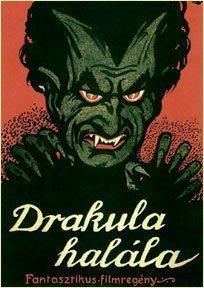
Graven Images: The Search for Drakula
No one in reading this sentence is old enough (or undead enough) to have seen this film, which uses the following quote:
“I am Drakula, the immortal one. I have been around a thousand years, and I shall live forever…Immortality is mine…Men can die, the world can be destroyed, but I live, I shall live forever!”
More than eighty years ago, a group of people made a film, called The Death of Drakula. This is a story about the search for what happened to this film, a search that ultimately led to a larger story not about the death and life of Drakula, but about the death and rebirth of a generation of Hungarian filmmakers.
The German silent film Nosferatu has long received credit for being the first filmed version of Dracula. While researching Nosferatu, I repeatedly came across references of a Hungarian film, made possibly earlier than Nosferatu, titled The Death of Drakula, directed by a man named Károly Lajthay. Intrigued, I decided to travel to Hungary to research this film.
In my last blog, I talked about the first trip I took to Hungary in 1994 to research the ‘original’ Dracula film, The Death of Drakula.
The information I learned from this trip sent me in a number of different directions, including contacting the German and Austrian archives looking for traces of this lost film. The most productive part of the trip (with the help of the Hungarian Film Archive) was the unearthing of a Hungarian film magazine that had a one-page spread about the making of Drakula. The article had a tantalizingly brief description about the plot, but more importantly, included two production photographs taken while the film was being made for publicity purposes. At last we could at least get a glimpse of the Count!
Naturally, this information only wet my appetite, and when I returned to Hungary in 1996, I had three goals: 1) Research the trade magazines for information about the film. 2) Interview an actress who had worked with Lajthay, the man who directed Drakula, and 3) Spend time in the Hungarian Library looking for additional references to this film.
As I arrived back in Budapest, the changes in the ‘feel’ of the city—in just two years—were so profound that I wondered if I was in the same place. On my first visit, there had been a sense of being in an ‘open city,’ a term used in WW II when an army, usually because of being hopelessly outnumbered or outgunned, left a town unguarded, in the hope that the approaching army would not use bombs or use deadly force to occupy it. Because the Soviets had been in Hungary for decades, not years, perhaps a better way to describe what I saw was that of being in a prison in which the jailers had one day suddenly opened all the doors and disappeared, leaving everyone inside to fend for themselves. No questions answered, no explanations, no excuses, just abandonment. How could any prisoner in this exceptional situation feel anything but conflicted feelings of both relief and anger?
Two years later, this sense of an ‘open city’ was gone. My train had taken me to ‘just’ a picturesque European city. The portraits of Lenin and other communist leaders that were still hanging in hotel rooms and public places two years were gone. All the mementos—the cultural place markers of the communist rule in Hungary—had vanished.
While I understood the impulse to shrug off this terrible era of oppression, there was a quality of erasure about the era I found disturbing. It was almost like the Soviet occupation of Hungary had never happened. But what did I really know about any of this? I couldn’t read or speak Hungarian, and I concluded my reaction was a result of a naïve tourist trying to understand a profoundly complicated subject.
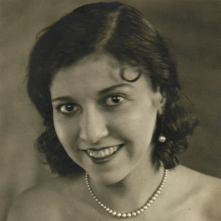
A photo of Mária when she was still an actress.
I got back to my research into what was probably the first Dracula film. I could find no one alive who worked on The Death of Drakula, but with the help of the Hungarian Film Archive, I interviewed Mária Szepes, a woman who, as a child actress, had been directed by Lajthay in another film. After her career as an actress was over, Szepes was enjoying a long and successful second career as an essayist and novelist.
With a translator provided by the Film Archive, we traveled to her apartment. Elderly, but in good health, Mária was comfortably ensconced in an apartment full of books, many of which she had written. After making introductions and talking about her work, I brought up the topic of the director of The Death of Drakula.
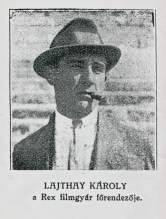
“He was more interested in women, horses and booze than in making movies.”
Her memories of Lajthay were not happy ones. Mária Szepes first met him with her parents at a Hungarian coffeehouse. Lajthay was full of promises about how his next film was going to be a huge success. “He was a great talker,” Mária explained to me, “more of a talker than a doer.” When Szepes arrived for the actual filming, the shooting was a disorganized mess. Lajthay, in Mária Szepes’s memory, was more interested in horses, booze and women than in trying to get the right shots. Because of this bad experience, Szepes dismissed both Lajthay and The Death of Drakula, “It could not have been a very good film. He was full of promises, and none of them happened.”
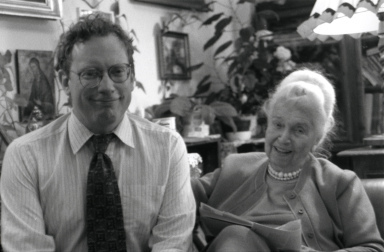
A photograph of Mária and myself.
While Mária Szepes was giving us useful information, time has a way of influencing and changing memories. Also, other directors, such as Tod Browning, were legendary for turning material from haphazard and disorganized shooting into compelling silent films. Mária Szepes had no memory of ever seeing The Death of Drakula, so her final conclusion as to its merits was as much conjecture as anyone’s. Whatever his talent, Lajthay’s film career did not survive much past the sound era. He worked sporadically in theater around Europe until he died at the age of sixty, in 1945. None of his silent films survive, and his story is the story of an entire generation of Hungarian filmmakers. Almost all of their films are gone.
My interview with Mária finished, I said my goodbye to this lovely lady, and later that day, wandering back to my hotel, walked into a demonstration. A group of old, gray-haired Hungarians were holding signs and gathered at a park. Holding a microphone, one of them was giving an impassioned speech. The advanced age of most of the demonstrators made it one of the oddest protests I’d ever witnessed. Someone who spoke English saw my puzzled face and came up to explain that the crowd had gathered together to memorialize the 1946 uprising. “But it’s such a small crowd,” I said. The stranger in street gave me a somber look. “Yes. Very small. For most Hungarians don’t know about what happened in ’46. They don’t care…they don’t know about any of this.”
My concerns about a lost film from the 1920s seemed petty by comparison. This small crowd—this visible challenge to a national amnesia of a hugely important post-WW II event—was happening before my eyes. My thoughts about memory being perishable was being acted out, not in the world of silent film, but in a world very close to my own time.
As I look over these words I wrote in 1996, 16 years ago, time has dimmed my own memory, and I am hard pressed to remember exactly what I saw. I remember the raw naked emotion of these few old men in the square, but little more. I Google key words and find a wiki article:
The Hungarian Revolution or Uprising of 1956 was a spontaneous nationwide revolt against the government of the People’s Republic of Hungary and its Soviet-imposed policies, lasting from 23 October until 10 November 1956. It was the first serious blow to Soviet control since the U.S.S.R. forces drove out the Nazis at the end of World War II. Despite the fact that the uprising was not successful, it had a large impact and would come to play a role in the downfall of the Soviet Union decades later.
The revolt spread quickly across Hungary, and the government fell. Thousands organized into militias, battling the State Security Police (ÁVH) and Soviet troops…By the end of October, fighting had almost stopped and a sense of normality began to return.
After announcing a willingness to negotiate a withdrawal of Soviet forces, the Politburo changed its mind and moved to crush the revolution. On 4 November, a large Soviet force invaded Budapest and other regions of the country. Hungarian resistance continued until 10 November. Over 2,500 Hungarians and 700 Soviet troops were killed in the conflict, and 200,000 Hungarians fled as refugees. Mass arrests and denunciations continued for months thereafter. By January 1957, the new Soviet-installed government had suppressed all public opposition. These Soviet actions alienated many Western Marxists, yet strengthened Soviet control over Central Europe.
Public discussion about this revolution was suppressed in Hungary for over 30 years, but since the thaw of the 1980s it has been a subject of intense study and debate. At the inauguration of the Third Hungarian Republic in 1989, 23 October was declared a national holiday.
So back in 1996, I had been watching a meager demonstration against cultural amnesia, not from any inherit apathy or lack of interest, but instead from a concerted forty-year effort by the communists to erase this incident from the hearts and minds of Hungarians. To this point, they were largely successful, and if the Soviets had stayed in power only another 20 years, this deletion of history would have been largely successful. My views about the erasure of memory were becoming more nuanced. The contemporary effort of the Hungarians to forget the Soviet occupation that I noticed in 1994 and 1996 were in a sense, a payback for all the years the Soviets had spent trying to make they Hungarians forget their own history.
My last task in Budapest was to spend a day in the National Budapest Library. I came with high hopes and an English/Hungarian Dictionary, but three hours into the task, it was clear that I was outmatched. Not knowing the language, I was forced to use key words as pictograms, and this is an extremely inefficient way to use a library. I spent the afternoon looking at newspapers (easier to translate) and after addressing the confusing point that the first run of the film in Budapest appeared to be in 1923, I packed up my papers and headed home.
Later, my contacts from the Hungarian Film Archive told me that other researchers found what I missed—definitive information about the film itself. Did I look in the card catalog under the wrong heading? Or maybe even the wrong card catalog? I don’t know, and in the long run, it doesn’t matter.
A year after I left Budapest, another Dracula scholar, Jenö Farkas, continued my search, but being Hungarian, had a leg up on the detail work. While in the National Library, he found a filmbook, published in 1924, titled The Death of Drakula.
Filmbooks attempted to translate a film onto the printed page to give the story a different form of accessibility to the public. Since these adaptations were frequently fleshed-out versions of the film’s script, the storylines in the books and films were usually similar if not identical. Filmbooks were then, and are now (in their modern incarnation as paperback novelizations) a popular way for those involved in the production of the film to make additional revenues.
With this book, Farkas was able to reconstruct the probable plot of the original film. Since this book is probably as close as we will ever get to seeing the movie itself, I am going to describe the storyline in some detail.
The story begins as Mary Land, an innocent sixteen-year old orphaned seamstress, lives by herself in a small mountain village in Austria. She visits a mental hospital once a week to see her adopted father, who has had a nervous breakdown after the death of his wife. On Christmas Eve, Mary receives word that her father’s health is failing. Her loyal boyfriend George, a local forest ranger, takes her to the hospital. Inside the hospital, Mary meets a once-famous composer who was once her music instructor. He has since gone mad and now claims to be the evil Drakula, spelling his name with a ‘k’ (perhaps to give the name a more local touch). Mary tries to talk to her former teacher. “Try to remember, Mr. Professor…I was there, second row…you stroked my hair as a sign of approval…”
Shaken by this encounter, Mary is then seized and abducted by two patients who think they are doctors. They tie her up on a table with the intent of operating on her eyes. The plot is broken up by the staff of the hospital, and Mary is untied. She arrives at her father’s side just in time for him to die in her arms.
Mary Land, spending the night at the asylum after these horrible events, has a terrible dream. Her music instructor, now calling himself Drakula, kidnaps her and takes her away to his castle. Twelve brides gather around her and escort her to a black magic marriage ceremony. Mary realizes that she going to be Drakula’s new bride. At the last moment, Mary lifts up the crucifix she is carrying around her neck. “The cross! The cross!” Drakula yells, backing away. The rest of the evil spirits are repulsed. Mary runs out of the castle and into the woods.
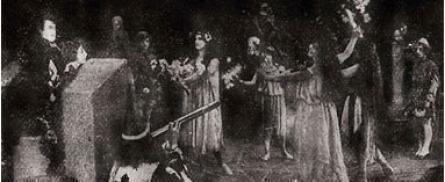
Photos taken from the trade journal match the filmbook storyline.
Half-frozen, Mary is found by friendly villagers, and they call for a doctor. As Mary hovers near death, Drakula comes to her bedside and tries to hypnotize her. He approaches Mary with “a hellish face, blazing eyes, satanic features and hands ready to squeeze.” The real doctor has been through a fiendish ride on a dark winding road to get to Mary. Now he arrives and with his help, Mary fights off Drakula’s mesmerizing gaze. A lamp overturns, and the house catches on fire. Mary again runs out into the cold night, but now she wakes up to find herself back at the mental hospital. Was this all a dream, she ponders?

Paul Askonas, the first screen Dracula.
Meanwhile the insane inmates are playing games in the hospital garden. “Funnyman,” a man wearing a pointed hat and thick glasses, has found a loaded gun. He aims it at Drakula, who seeing a chance to prove his immortality, urges the man with the gun to pull the trigger. “When the shot finally rang out, it penetrated Drakula’s heart and killed him instantly. His blood spilled out and left a bright red stain on the freshly fallen snow.”
Mary recovers, and as her fiancée George comes to pick her up from the hospital, they see Drakula’s body being carried out on a stretcher. Papers fall out of the dead man’s pocket titled “Diary of My Immortal Life and Adventures.” Mary does not want to see the diary, and George throws the book away. Mary never tells George of her terrible ordeal. She thinks to herself: was it all a dream, or did it really happen?
With this, the book ends, leaving us with a more contemporary question than interpreting Mary’s dream: how close was this printed book version to the film?
It’s useful to compare this narrative to the article about The Death of Drakula, which appeared in a Hungarian trade journal written in 1921. The journal includes two pictures from the film, one of Mary’s abduction and the other of the wedding. The details seen in the photographs and in the text match the storyline precisely. This evidence strongly supports that the storyline of The Death of Drakula book is close to what had been filmed three years earlier.
So the book is probably close to the script of The Death of Drakula, but this leads us back to the most important question of all: is this story close enough to Stoker’s novel to be considered the first Dracula?
One way to consider this question is to evaluate the story more as commentary on the pervasive impact of Stoker’s creation, rather than as a literal adaptation of the novel. The photos of ‘Drakula’ are similar to Raymond Huntley’s appearance in the stage play Dracula, which was doing great business in Europe at the time this film was made, and in that sense, Lajthay is evoking the image of Dracula as an evil character already familiar to the public.
There is no evidence in the filmbook of any deliberate attempt to associate Drakula with the historical Dracula, Vlad Tepes. Vlad was part of the Romanian history and culture, not Hungarian, and Vlad’s ties to Stoker’s fictional character are tenuous at best. However, it is an open question as to if this connection was made by some of audience familiar with the legends surrounding Vlad. Of note is that when the filmbook was published in 1925 it was published in Transylvania. Lajthay was also from Transylvania, which until 1918 was still part of Hungary.
The narrative from Death of Drakula models itself not from any historical event, but from the fictional stories circulating in the early part of the last century. Svengali-like stories of powerful dynamic men hypnotizing pure innocent girls were one of the staples of popular melodrama. Indeed, since Mary is kidnapped by her former music teacher, one could argue that the story is closer to Gaston Leroux’s Phantom of the Opera, than to anything Stoker visualized.
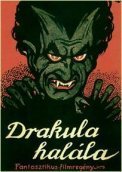 Still, there is the matter of the fangs. The front cover of the filmbook portrays a wonderful drawing of Drakula, displaying very sharp and deadly teeth. The image could be a display of wishful thinking by the artist. This would make it part of a long tradition of poster art and advertisements that promise more than is delivered.
Still, there is the matter of the fangs. The front cover of the filmbook portrays a wonderful drawing of Drakula, displaying very sharp and deadly teeth. The image could be a display of wishful thinking by the artist. This would make it part of a long tradition of poster art and advertisements that promise more than is delivered.
Or perhaps Drakula did have fangs, but only in the dream. If this is the case, the film itself begs the question of whether Drakula is real. This plot device appears lifted directly from The Cabinet of Dr. Caligari, of which this film has more than a passing familiarity. Freud was one of Vienna’s most famous citizens, and his influence can be felt throughout the story, chock-a-block full of symbols and neurotic dreams about substitute fathers.
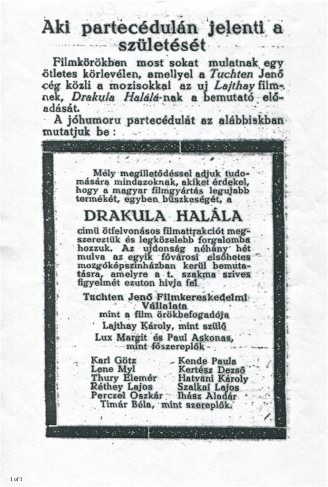
An ad from a trade journal promoting the film.
Newspaper accounts confirm that The Death of Drakula opened in Vienna in February 1921. Nosferatu premiered thirteen months later, in Berlin in March 1922. On these grounds alone, The Death of Drakula is clearly the first film adaptation that has a connection to Stoker’s novel.
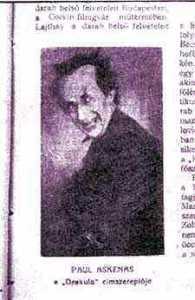
A reference book, with a probable publicity still from the film.
Perhaps the Austrians should get some of bragging rights as to which country produced the first screen Dracula. The film is an Austro-Hungarian collaboration, since the film was both partly shot and premiered in Vienna, and Paul Askonas (who played Drakula) is Austrian. This “Hungarian Dracula” has more than a little Germanic blood in his veins. According to records located by Farkas, the exterior locations of The Death of Dracula were shot near Vienna, and the interiors filmed in Corvin studios in Budapest. Paul Askonas was in many Austrian films in the twenties, but as these films did not reach wide distribution outside of central Europe, his work is obscure. Those interested can look for his brief but menacing presence as a butler in the 1924 German film The Hands of Orlac.
A trade journal reporting on the 1921 opening in Vienna mentions that the lead actress was played by a Serbian actress named Lene Myl. The film next resurfaces in Budapest in 1923 with the lead actress named as Margit Lux. Although this might be simply the result of a marketing decision designed to highlight different actresses, the possibility exists that Lajthay recut or reshot the film to star Margit Lux, making the 1923 film an alternative version.
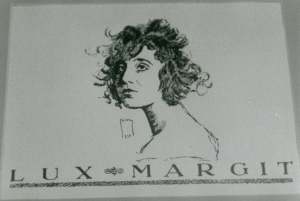
An artist’s drawing of Margit Lux, now at the Hungarian Film Archives
Károly Lajthay wrote and acted in more than twenty films and he directed at least twelve. All the films he directed in the silent era are lost. The Hungarian film industry in the 20s was a victim of the bitter political landscape that existed in the country after the first world war. Internecine fighting and lack of money combined to cripple the chances for talented filmmakers to make movies in their country. Many quit the business or became expatriates. Lajthay went back to his first training with the theater and was away from film for almost twenty years.
Lajthay returned to filmmaking briefly before he died in 1945. He was involved in the production of two sound films. The second, which he codirected, was Yellow Casino, made in 1943. Yellow Casino is a comedy-suspense thriller in the Hitchcock tradition. A man has a jealous rage over a woman he loves, and finds himself in an insane asylum. (In Hungarian, “yellow room” is Hungarian for mad-house.) Artists frequently return to themes important to them, and this film, which happily survives, turns out to be a recasting of elements from The Death of Drakula. So although the original film is probably lost forever, Lajthay’s vision lives on in a remake of sorts.
WW I produced a complete destruction of the Hungarian film industry. If one can say that the America and the Western powers won the war and lost the peace, then Hungary lost the war AND the peace. The county briefly became communist; artists and actors long held under the repressive and controlling bit of the Austro-Hungarian war regime rejoiced at a chance for a new beginning. In only four months, Hungary produced more than thirty films. The country had an opportunity for the flowering of an art form that could have rivaled the art of Soviet filmmakers such as Eisenstein and Kuleshov.
After a short 133 days of (red) wine and roses, the honeymoon ended with a bang and a crash. The Hungarian Red army was crushed by Romanian forces, supported by anti-communist Whites. The result of this civil war produced a bitter, internecine struggle in which the artists who had declared themselves either communist or communist sympathizers (either from sincere beliefs or in order to work for the new Hungarian Soviet film studio) had to flee, sometimes for their life. This purge, combined with a growing anti-Semitic movement, produced an exodus of talent from Hungary only perhaps rivaled and surpassed by the flight of the Jews from the Nazis a generation later.
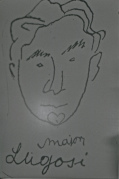
A caricature of Bela Lugosi on display at the Hungarian Film Archives
One happy outcome of this death of the Hungarian film industry is that the seeds scattered by this diaspora was to enrich the rest of the world. Kertesz Mihaly resurfaced as Michael Curtiz, Lukacs Pal became Paul Lukas, Korda Sandor became Alexander Korda. Another ambitious actor, Bela Blasko, working under a stage name Olt Arisztid, who had been organizing an actor’s trade union, fled to Germany, then to America, now with the name of Bela Lugosi.
This is all interesting as a history lesson, but to return to the question that started my search is the first place: Is the The Death of Drakula the first story featuring Dracula? Is it the first movie to describe what we now think of as vampires?
Vampires are quintessential seducers, and seductive men and women have been a staple of films from almost the beginning. With this very broad definition, you could find vampires lurking in many if not most films. In an attempt to be more selective, many vampirologists resort to more literal definitions to sort out the vampire from the vamp. Is he or she real or supernatural? For this film in particular, does Drakula have fangs, and does he suck blood?
On first consideration, The Death of Drakula fails this “bite ‘em in the neck” litmus test. The film is not, in effect, a realization of the novel itself; it is more a commentary on the pervasive impact of Stoker’s creation. In only twenty-four years from the novel’s publication, Dracula is already familiar enough for Lajthay to use as a symbol of evil repelled by a crucifix.
Those who insist that their Counts live in coffins and suck blood can rest assured that the German Nosferatu still qualifies as the first attempt to film Stoker’s novel. The rest of us who like life with its complications and ambiguities can point instead to Hungary. It is only fitting for the country of the birthplace of Bela Lugosi to also have made the first filmed Dracula.
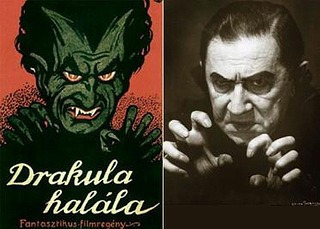


November 3, 2012
Graven Images: Commies, Counts and the Erasure of Memory
3 May. Bistritz.–Left Munich at 8:35 P.M., on 1st May, arriving at Vienna early next morning; should have arrived at 6:46, but train was an hour late. Buda-Pesth seems a wonderful place, from the glimpse which I got of it from the train and the little I could walk through the streets. I feared to go very far from the station, as we had arrived late and would start as near the correct time as possible. The impression I had was that we were leaving the West and entering the East; the most western of splendid bridges over the Danube, which is here of noble width and depth, took us among the traditions of Turkish rule.
Bram Stoker’s opening words in Dracula
The day had started warm, but as my train left Vienna and approached Budapest, the sky grew somber, and a damp October chill filled the evening air. I was looking for the Count. But not exactly the Count you may be thinking of. He spelled his name differently here, Drakula, and that was the point. I was looking for a native son.
It was 1994, and in this part of Hungary, the echoes of the fall of the Berlin wall seven years before were still reverberating. While travel restrictions around the country had been lifted, the detritus of a hopelessly outmoded Soviet bureaucracy largely remained in place. Deserted guard boxes were scattered around train stations, which still displayed pictures of long dead Soviet leaders. The effect was a surreal landscape in which you found yourself in what was, in effect, a giant prison patrolled by invisible and indifferent guards.
The train drew closer to Budapest. As I pulled my coat tighter around me, the compartment door opened and a man stumbled in, more from his own motion than the rumble of the tracks. His face was lined with a thousand old pains but his eyes were clear and he looked at me with the look you are not supposed to give strangers. He then spoke to me—it was a question because of the raised tone at the end of his sentence—but I was absolutely deaf to its meaning.
Opening up my guidebook section to Hungarian phrases, I responded with comments such as, “Nem értem.” (I am sorry…and then, I don’t speak Hungarian). The stranger apparently took my mutterings as a challenge, he came over to my seat, and leaning down, inches from my face repeated his question. The alcohol from his breath rolled over me in waves. I looked down at the guidebook, clearly inadequate for this task, and decided to just try every answer with the hope that one would work. “Hello, goodbye, nice day…”
Finally the man’s face lightened and a thin smile crept over his lips. He pointed at me, and muttered “Anglish.” He nodded as if he had solved a deep mystery, then rose and left for the door. He turned back to me one last time, yelled “Anglish,” laughed, and was gone.
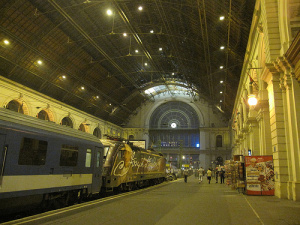 With this introduction the train rolled into Budapest. I pulled my luggage off the train and started for the end of the tracks. I was greeted by the Bathorys, Erzebet and her husband, who had arranged to meet me at the station. We packed into a small car, and sped off to a hotel, plotting our campaign.
With this introduction the train rolled into Budapest. I pulled my luggage off the train and started for the end of the tracks. I was greeted by the Bathorys, Erzebet and her husband, who had arranged to meet me at the station. We packed into a small car, and sped off to a hotel, plotting our campaign.
The problem was simple: the Count was missing. This Drakula, was the name of a character from a Hungarian film, The Death of Drakula, made in 1921. Out of the hundreds of Hungarian silent films made between 1910 and 1930, at the time of my visit in the mid-nineties, only about eighteen complete films had been found. The rest had been destroyed or lost. The Hungarians are not alone in this tragedy. Silent films have shared the same fate all over the world. There are many reasons for these losses: accidents, war, and even intentional destruction. George Orwell said, “Those who control the present, control the past. And those who control the past control the future.” Our history and culture reflect not only the artistic achievements of the past, but also the whims and tastes of passing ideologies. Memory and history are preserved by delicate and often perishable means. In the struggle for control of who will be arbitrator of what is important in this world, vast stretches of cultural history can vanish forever, casualties of this war over what is remembered and what is forgotten.
As time has passed, films like The Death of Drakula continue to be lost, although for the last half century the reasons for their destruction have become consolidated into two overriding problems—time and money. Who will pay and work for their preservation? Dedicated enthusiasts from many different countries have taken up this challenge. Erzebet is such a person. Employed by the Hungarian film board in Budapest, one of her jobs is to be on the lookout for old films. One has to remember without the magic of a projector, these films are essentially of no value except for the their silver content. Their creators long since dead, these old films are like orphans, often victims of neglect and apathy. They were stashed, ditched, or thrown away. In their rusting cans these films are hidden in closets, attics, basements, barns. To do her job, Erzebet needs to be detective, antique collector, historian, and above all, very persistent.
The Hungarian film The Death of Drakula was screened for the general public in 1921. Like most of the films of its era, the film seems to have faded from attention almost as soon as it was made, although the reference sources suggested that a version of the film might have resurfaced for additional screenings in 1923. No records regarding the film other than the title were to be found in any available reference source. The Internet was still in its infancy in the early 1990s, and my visit to Budapest was to investigate primary sources only available in Hungary.
Erzebet and her husband took me to supper. The couple looked like they were going to simultaneously explode, and finally Erzebet asked me if she could smoke. The hands were going for the cigarettes before my nod was finished on my face, and I was amused at this display of politeness where I was the only person in the restaurant not smoking.
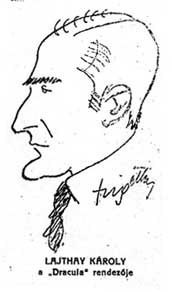
An artists caricature of Károly Lajthay
The next morning I met Erzebet at the Hungarian Film Institute. I spent the morning in their library, and was able to learn some useful information about my Count. Although of course the film itself was nowhere to be found, we did find records of its production staff and cast. According to the information in the archives, Drakula was directed by Károly Lajthay, a prolific Hungarian filmmaker, who lived from 1885 to1945. His credits list at least thirty films, including The Death of Drakula made in 1921. None of Lajthay’s silent films are known to have survived. There was also an Austrian connection to this film. Erzebet explained to me that German-Hungarian co-productions were quite common at the time. Hungarian crews would travel to Berlin or Vienna to use the studios and available equipment. The cast included a Hungarian, Margit Lux (from her photos available at the archive, she was a Julia Roberts of her day), and two Germans—Paul Askonas, and Karl Jotz. The rest of the cast and crew were Hungarians. A central question remained. Was The Death of Drakula a film about Bram Stoker’s Drakula or perhaps the historical Romanian Count? In this the archives were no help. Across one record was a handwritten note that offered the faintest description of the story. The note mentioned the crew, then stated ‘scenario by H. G. Wells?’ I threw up my hands to Erzebet, who studied the marginal note and responded “The man who wrote that was by trade a lawyer. He came over in his spare time to help collect information. He was dedicated, but he was still an amateur.”
While the archives had no more information, I did learn that records of the intertitles might still be in Berlin or Vienna. With this information, I might still be able to find out the film’s plot. Another possibility was that references to the film could be found at the National Library in another part of Budapest. I could do no more at the Hungarian film archives, so Erzebet and I left to go to the city center.
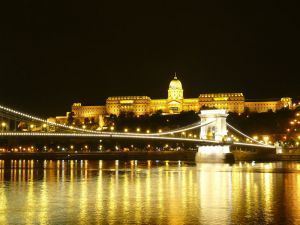 The two towns, Buda and Pest are commonly joined in speech but in life they are separated by the famous Danube River. I found the city beautiful but odd in several respects—running your gaze over the old and beautiful horizon, one’s eye was rudely jarred by more recent buildings (built during the Soviet occupation), that were completely at odds with their surroundings. With these new buildings spread out as random grey dabs of concrete, Budapest looked like a beautiful city that had been shat on by a giant pigeon. These physical monuments of the Soviet presence were impossible to ignore. They must function as both physical and mental irritant to the Hungarian psyche, I thought, a log in a mental eye that one cannot remove.
The two towns, Buda and Pest are commonly joined in speech but in life they are separated by the famous Danube River. I found the city beautiful but odd in several respects—running your gaze over the old and beautiful horizon, one’s eye was rudely jarred by more recent buildings (built during the Soviet occupation), that were completely at odds with their surroundings. With these new buildings spread out as random grey dabs of concrete, Budapest looked like a beautiful city that had been shat on by a giant pigeon. These physical monuments of the Soviet presence were impossible to ignore. They must function as both physical and mental irritant to the Hungarian psyche, I thought, a log in a mental eye that one cannot remove.
Erzebet and I arrived at the town center, and we met her daughter, Ursula, who was to take me around the town. Ursula was a serious twenty-four year old—her serious brown hair was pulled straight back, she wore a serious jean jacket, and her feet were in serious-looking granny shoes. Erzebet left me contemplating her daughter’s stern view of the world and returned to work.

This looks like the coffee shop where we had our drink, but the Internet says the New York was closed in the year I visited Budapest. Maybe it was partially closed? How easy it is to forget, and how hard it is to remember these details.
Trying to lighten the situation, I persuaded Ursula to go to the New York Coffee House, which my trusty guidebook said was the time honored location for pastries and coffees. She looked at the address and off we went. The New York was an essay in 19th century seedy opulence, and the pastries, like the decor, was too rich for casual consumption. There were only a few scattered German tourists in the restaurant. Near us, a piano player was busy unsyncopating Scott Joplin’s ‘Maple Leaf Rag’ by playing it like a Strauss waltz. The waiters ignored us. We waited. Ursula glowered.
“Is this your first time here?” I asked.
“Yes.”
“Is this going to be your last time here?”
“Yes.”
“Let’s go someplace that you like.”
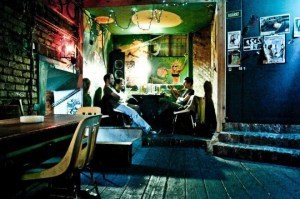
Not the ‘A’ nightclub but a close proximity
She took me to the ‘A,’ an alternative nightclub, brick walls, dark and smoky. Everyone in Budapest smoked. I hadn’t seen any children smoking, but then I had only been in Budapest for two days. I had long suspected East Europe’s cigarette habit was a grand CIA conspiracy to win the cold war. The U.S. military had kept the Soviets occupied with stories of ABMs and Star Wars satellite lasers. Meanwhile, the real dogs of war, companies like Phillip Morris, had crept in and produced a culture of addicts. At the precise moment of an impending NATO invasion, the WARSAW pact countries would collectively gasp and defenselessly fall blue-faced to the ground.
Not that anyone in the CIA had anything against this part of Europe. When the Eastern Europe was carved up like a turkey among the winners of the WW II, Hungary was just the piece of the wishbone that ended up in the wrong camp. The spoils of a game-board view of the world. I asked Ursula about her feelings about growing up under a communist regime.
“I was forced into taking twelve years of Russian,” she explained to me. “Do you know how much of that twelve years I remember? Nothing. Nothing… No, that’s not quite right. I remember this—(and she quickly rattled off a sentence in Russian). It means ‘Hello comrade, I am well today and everything is going as planned.’ We repeated this sentence endlessly. This is what the communist government was to us. ‘Hello comrade, I am well today.’” She crushed her cigarette and lit another.
Ursula was in the Hungarian film school. She was completing a film about the Hungarian version of the Hell’s Angels, motorcyclists who drive around the country flaunting authority, going where they wish, doing what they want. She and her friends had shot twenty-five hours of videotape following these groups. “The bikers have formed local clubs, which are doing really well,” she explained. “But a lot of older Hungarians don’t like these clubs. They see the bikers as a threat. I am going to do two versions of this biker film,” she added. “One is for television. The other will be for school. It will be longer. I can make it…” she stopped, struggling for a word.
“More personal?” I offered.
“Yes. More personal. It will be my film. For TV you have to explain so much. The public is very scared of these people. But you know, these are really very nice guys. Very independent.”
“Would you like to join a biker’s club?”
“These clubs are not for women. There would be no place for me.”
“You know these guys often settle down, buy a house, raise a family.”
“Yes, sometimes, but I see men who are in their 60s, 70s—they dye their hair, come out on their bikes—it’s great!”
“Does is scare you to think what you’ll be doing when you’re older?”
She looked at me hard, then nervously laughed, “Yes, I think I’ll be a housewife and raise a family.” She knocked the ash off her cigarette. “This idea scares me a lot.”
I went to bed that night thinking of what we choose to remember and what we try to forget, and how often we even have a choice in the matter. Hungary had lost most of its cultural memory of its film history, partially from neglect, but largely from two World Wars raging through its streets. Then afterward, an occupying force had done what it could to impose itself on Hungary by forced education and architecture. And yet its grasp on the Hungarian cultural memory was tenuous at best, and in only a few years after the Soviets had left, the memory of its occupation was already slipping away. One conclusion was clear to me—it’s always easier to forget than to remember.
The next morning I went back to the Hungarian Film Archives to follow up with some research and was rewarded by the discovery of a film journal that gave a brief description of the film. More importantly, the magazine had two photos of the film while in production. The Death of Drakula, for decades just a footnote in musty reference books, had at last been sighted! I made copies of these two precious photos. This was a wonderful development, but there was much more to come!
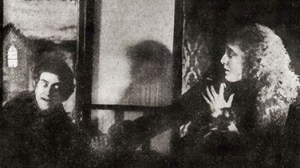
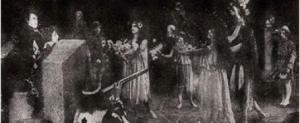
(Next—an interview with an actress that worked with Lajthay, and a Drakula filmbook found!)


October 29, 2012
4 Devils…Found!
For many years, 4 Devils was thought to be a lost film. But…after looking in a closet, it has been found…and here it is after many decades of being lost….4 Devils!
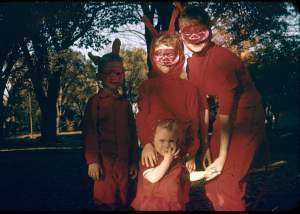
My 2 sisters, Alanna, Andrea, my brother Lyndon, and me.


October 19, 2012
Frankenstein And The Matryoshka Chain
 Storytellers are creators. The stories they create are filled with characters and situations forever unique, because the story exists in its own universe, outside of a real time and place. Inside of each story is some form of thought experiment, and inside of each of these thought experiments is a question.
Storytellers are creators. The stories they create are filled with characters and situations forever unique, because the story exists in its own universe, outside of a real time and place. Inside of each story is some form of thought experiment, and inside of each of these thought experiments is a question.
These thought experiments cover many topics and disciplines. They can investigate and analyze specific times and places or offer unrestrained, expansive observations. They can present “what if” speculation. They can impart ethical guidance or record moral outrage.
These concerns and observations (often described in fiction as themes) may be compelling on their own terms, but they may also be complex or hard to grasp. Writers who choose to use narrative as a vehicle to investigate these concerns will often create a simpler question at the core of their work. This central question can function as an “engine,” propelling the story from beginning to end.
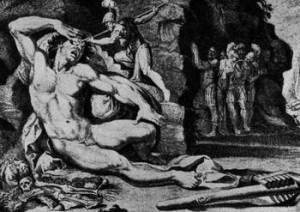
Odysseus and his men enter the home of Polyphemus, the cyclops, and eat his sheep without permission. Polyphemus retaliates by eating Odysseus’s men. Odysseus retaliates by putting out the eye of the cyclops. A case of xenia gone very wrong.
For example, one of the oldest and most durable stories in Western culture is Homer’s The Odyssey. For more than two thousand years, readers have thrilled to the struggles of Odysseus in his attempts to return to his homeland of Ithaca after the Trojan War. A concern—a theme—that dominates almost every page of The Odyssey is the use and abuse of xenia, a Greek word usually translated as the “guest-host relationship.” Every event in the story, from Odysseus’ encounter with the Cyclops to his return home to find his wife’s suitors defiling his house, is in some way a study of the reciprocal obligation between the guest and host (and all the negative consequences that happen when this obligation is not met). But the reader may not be aware of The Odyssey’s almost obsessive exploration of xenia, because throughout the book, there is a more immediate and compelling question: will Odysseus be reunited with Penelope?
A more recent story, Leo Tolstoy’s Anna Karenina, is a romance set in nineteenth-century Russia. The novel is a devastating assessment of the Russian aristocracy: a false, decadent society where French, not Russian, is the preferred language. By extension, Tolstoy then asks us to consider a more universal, deeply troubling uncertainty—can one live in a world of lies and falsehoods and still be true to oneself? But for readers of Anna Karenina, there is a central, more immediate question: will Anna find happiness with Vronsky? So a storyteller’s task of creation occurs on multiple levels. A universe is created and peopled with characters. The complex interactions between the characters and the world around them provide the thought experiment— the theme—of the work. But the driving force of the story is often the simplest of all questions: will Anna and Vronsky stay together? Will Odysseus return home?
Most stories have some form of characters recounting past events, simulating the hearsay of our natural world. Recounting conversations and events, no matter how inaccurately, is something we do all day long. This happens in the most natural way possible when we recount a story told to us by someone else. My father tells me the story of how he broke his arm while in the Army and how this broken arm kept him out of the Battle of the Bulge. I tell this story to my friends without a second thought. But sometimes we go to a second level: while telling me about his life, my father includes the story about his father, who when he was a young man, hit the high school principal—an event that expelled him from school and changed his life forever. I rely on my father’s, grandfather’s, and my own memory when I tell this story—with some effort since the story is now thirdhand. The art of oral narrative usually stops at this point because the details and point of the story get lost. It’s why oral historians consider the time period of three generations to be the upper limit for passing on reliable information.
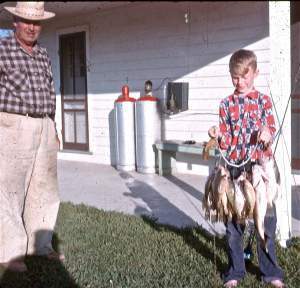
Three generations of my family: Munroe Heiss on the left, my brother holding the fish, and the shadow of my father taking the picture. We have lots of stories about my grandfather, some of them may even be true.
But when the story becomes purely a work of fiction and when written on paper (which makes it easier to follow), this three-level limitation disappears. Writers who go beyond this three-level limitation are entering a strange and exotic form of storytelling called recursive fiction. Stories of this nature are like Matryoshkas—a popular souvenir doll sold in Russia. You open one doll and find a smaller doll inside. Then there is a smaller doll inside of that. And a doll inside of that one.
Stories are constructed in stratums; on close observation one can see layer folding over layer, a universe existing like a half-cut onion sitting on a table. But where does the creator fit into this scheme? Is the storyteller hovering above the onion, impulsively cutting through its parts, revealing coils and swirls of multiple inner worlds? Instead of looking inward at the onion, suppose we look from the center out. Is the creator merely one more layer, one more level, of endlessly rising whorls? In the end, is there an ultimate creator, the ultimate storyteller? Sometimes the thought experiment, the theme that the writer wishes to explore, is this very question.
Framing one story inside another has been a device for writers almost as old as the act of writing. “The Fisherman and Genie,” from The Arabian Nights, extends to five levels, as does the “Nun’s Priest’s Tale” by Chaucer. On reading some of these stories inside stories inside stories, one wonders about the thought experiment behind them—was the writer making a statement or merely showing off his or her literary skills? Still, at some point, the philosophical implications of these “nested narratives” became obvious. Writers who were mathematically inclined saw the possibilities of using these stories to describe a concept called infinite regression. Jonathan Swift puts the idea succinctly into a single verse:
So, naturalists observe, a flea
Has smaller fleas that on him prey;
And these have smaller still to bite ‘em;
And so proceed ad infinitum.
Poetry, a Rhapsody
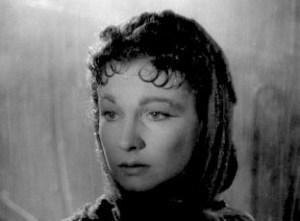 Despite how some writers might feel as they write a story, fictional characters have as much free will as marionettes. Fictional characters must speak, bend, jump, and are in every way controlled by the master above them, who is holding and pulling the strings. Most writers try to camouflage these strings. After all, the more we believe that characters have free will, the more emotional jeopardy they are in, and the more we worry about their welfare. If I think of AnnaKarenina as a thematic critique of 1870s decadent Imperial Russia, why should I care what happens to her? But if I think of Anna as a woman, flesh and blood, a woman forcibly kept from her child, a woman who is trapped, with no way out…as she walks slowly to the train tracks, I want to shout: “Watch out, Anna! Don’t do it!”
Despite how some writers might feel as they write a story, fictional characters have as much free will as marionettes. Fictional characters must speak, bend, jump, and are in every way controlled by the master above them, who is holding and pulling the strings. Most writers try to camouflage these strings. After all, the more we believe that characters have free will, the more emotional jeopardy they are in, and the more we worry about their welfare. If I think of AnnaKarenina as a thematic critique of 1870s decadent Imperial Russia, why should I care what happens to her? But if I think of Anna as a woman, flesh and blood, a woman forcibly kept from her child, a woman who is trapped, with no way out…as she walks slowly to the train tracks, I want to shout: “Watch out, Anna! Don’t do it!”
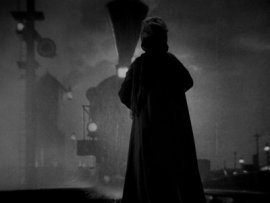
But writers of nested narratives, for the most part, choose not to follow the normal set of tricks that make a reader believe what he or she knows not to be true. Nested narratives almost always have a contrived feel about them. The process is not only inherently confusing (what story am I in now?) but is also a forcible tug at the reader’s suspension of disbelief. Instead of whispering to you, “Pay no attention to the man behind the curtain,” these stories open the curtain, emphasizing the construction and artificiality of the entire work.
What is gained from this approach is that nested narratives call attention to the question of who is charge. In a simple story, the writer of the piece is the person in charge. But when you have stories inside stories, a bizarre and confusing situation occurs as the characters then become their own authors. And nested narratives imply, by extension, that one can look upward instead of downward. Who is to say that the writer is the final arbiter? What if there is a puppetmaster over his head? And another over him? Can this succession of masters extend forever? Endless succession. Worlds within worlds. Worlds without end.
Religions are largely collections of stories and essays that debate different aspects of this question, understanding that the best or most appealing explanation of endless succession conveys legitimacy and, therefore, power. Some religions accept the concept of infinite layers. Other religions, like Christianity, refuse to consider endless succession. God is God, Alpha and Omega, the ultimate puppetmaster. Despite, or perhaps to defend this view, the Bible is largely preoccupied with variations on the question of who has final control. Indeed, an entire chapter in the Old Testament, Job, is devoted to the contemplation that we are being manipulated by forces we will never understand.
In the New Testament, Jesus seems to be of various minds about how to respond to questions involving fate and individual free will. In John 2:12-22, Jesus storms through the synagogue, fighting and chasing away the moneylenders. But later in John 18:36, Jesus is the ultimate pacifist, explaining that his kingdom is not of the Earth. Throughout most of the Gospels, Jesus appears to have complete knowledge of his future. But as he is dying (Mark 15:34), he cries to the heavens: “Father, why have you forsaken me?” If one gives up trying to consolidate these various views, one might suspect that the Jesus found in the Gospels is like a marionette, yanked and twisted all kinds of directions by a collection of writers with very different agendas. It’s the downside to being a marionette—you have no control over who is holding the strings.
Jesus is a vessel filled with metaphors: the savior, the child, and the son. It’s easy to forget that he is not the only child in this story. God himself, at least this version of God, is also a child, or at least a creation by writers who are long dead and are as real or fictional to us as their creations. They created God, who in their story then creates man. Genesis says that man was made in the image of God, but as one considers closely the series of Matryoshka dolls called the Bible, it becomes clear that the God of the Bible was also made in the image of man. Created and creator—similar but different. Distinctions are lost.
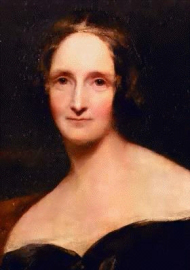
Mary Shelley was fascinated by the puzzles and questions provoked by infinite regression, in particular, the ambivalent positioning of the author somewhere between the levels of creation, hovering over one world and at the same time being under another. The story of Frankenstein is famous as an allegory for the danger of creating a force one cannot control. But Frankenstein’s monster was not animated by electricity and the fusion of spare parts from dead bodies but by the application, by certain rules, of ink to paper. And it is easy to forget, and this is a key point, that Victor is as much a creation as his more famous monster. The creator of both Victor Frankenstein and his monster was Mary Shelley.
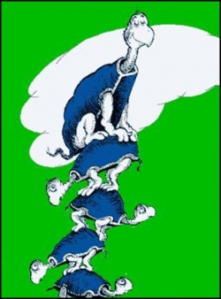
Dr. Seuss’s Yertle the Turtle demonstrating (almost) infinite regression
One might think that when Mary Shelley wrote Frankenstein, she would be satisfied with describing two levels of formation—three if you include Shelley herself. Shelley creates Victor Frankenstein who creates the monster. But Mary Shelley was far more ambitious. A clue to her approach can be found in the introduction to her second edition, where she says: “Every thing must have a beginning, to speak the Sanchean phase; and that beginning must be linked to something that went before. The Hindoos give the world an elephant to support it, but they make the elephant stand upon a tortoise.” Shelley is using a Hindu parable to describe her version of infinite regression.
The overall plot of Frankenstein is simple. Victor Frankenstein, a brilliant and overreaching student, fashions a living creature from the parts of dead bodies. His creature, never named, learns to read and write and becomes aware of who he is and who made him. After refusing to produce a mate, Victor and his creation become bitter enemies. Victor Frankenstein is eventually driven to manic obsession, and following the trail of the creature he created, dies from exposure and exhaustion in the desolate Arctic.
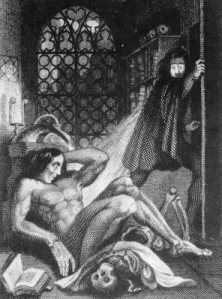
An illustration from the frontispiece for 1831editon of Frankenstein
But let’s look at this novel as a sequence of framing stories, or more picturesquely, a series of Matryoshka dolls. The outermost story is told by a captain of a ship, Robert Walton, who writes in his journal of his quixotic attempt to sail to the North Pole. While battling the Arctic weather, Walton finds a man, Victor Frankenstein, half-dead on the ice. On reviving, Victor gives Walton his account how he came to be stranded. Inside of this account, we have the monster’s story (told earlier to Victor) about how he learned to read and write by watching the DeLaceys, a family exiled from Paris and living in a cottage in Switzerland. Not satisfied with these three levels of begats, Shelley continues her narrative within narrative. As the monster’s story continues, he recounts the account of the DeLacey family and how they fled from Paris after defending a Turkish man unfairly accused of a crime. Inside of this story is the story of DeLacey’s son, Felix, who loves the Turks’ daughter, Safie. And finally, inside of the account of Felix and Safie, we learn about Safie’s mother, who was abducted and sold into slavery. This last “wisp” of a story measures only five sentences. In each of these stories, there is a common element of inequality between the characters who interact with each other. Parent to child, accuser to fugitive, native to foreigner, master to slave—there is a disparity of power found in every story.
In addition to Shelley’s interest in exploring different ways the strong can abuse the weak, she also allows for a playful variation in the narrative itself. Somewhere between the third and fourth level of these stories, the monster assumes the role of narrator. Frankenstein’s monster may rail against forces he cannot control, but for a good portion in the novel, he gets to be a storyteller getting the pleasure and satisfaction of opening and playing with his own set of Matryoshka dolls.
Frankenstein, living up to its own metaphor, became a creature that its author battled to control. Thirteen years after its original publication, Mary Shelley published a new edition, altering key elements of the text. In the original novel, Victor Frankenstein’s great sin was not creating life; it was in choosing to be a bad parent. Victor’s neglect and abandonment of his creature are the cause for the disasters that follow, not his hubris in playing God. Perhaps after the death of her husband, Percy, and the loss of two of her children, Mary decided that free will played too much a second fiddle to insensible fate. In the revised 1831 edition, Victor Frankenstein states: “Destiny was too potent, and her immutable laws had decreed my utter and terrible destruction.” The irony for Victor was that never at any time did he have free will, being a fictional character and completely subject to the caprice of the author, who as she grew older, began to suspect that the concept of free will was greatly overrated.
As Mary Shelley said herself, no creation comes from nothing; every creation must have its antecedent. “Invention…does not consist in creating out of void…the materials, in the first place, must be afforded.” Shelley found her “materials” in John Milton’s epic poem, Paradise Lost. Obeying Shelley’s dictum that invention does not come from a void, Milton found much of his “materials” in Greek myths. Casting them in a Judeo-Christian framework, a hugely effective cover for his potentially heretical explorations, he masterfully stated the essential problem raised by the act of creation:
“Did I request thee, Maker, from my clay
To mould me man? Did I solicit thee
From darkness to promote me…?”
—Adam, Paradise Lost, Book X 743-45
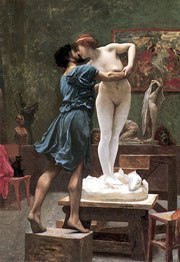
Milton’s Paradise Lost reinvents and conflates two myths in particular, Prometheus and Pygmalion. Both myths concern themselves with the act of creation and the subsequent unstable boundaries between the creator and the created. In the first myth, Prometheus, a Titan, creates man out of clay. There is an associated legend of him giving fire to man; the two stories coalesce with the image of Prometheus breathing fire, the breath of life, into man. In the second myth, a sculptor, Pygmalion creates a statue named Galatea, a statue so beautiful he falls in love with it. A prayer to Venus is granted, and the statue comes alive. In Ovid’s version of the myth, Galatea’s obedience to Pygmalion is complete; she falls in love with Pygmalion with her first breath. In 1912, George Bernard Shaw reworked the story, this time giving Galatea, now named Eliza Doolittle, a mind of her own. In a famous passage, after enduring repeated insults from her Pygmalion, Henry Higgins, she explodes in anger:
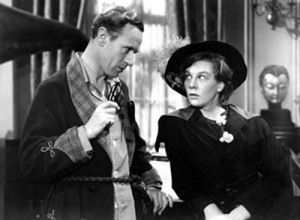
Leslie Howard and Wendy Hiller in the 1938 film version of Shaw’s ‘Pygmalion.’
ELIZA
…I’d like to kill you, you selfish brute. Why didn’t you leave me where you
picked me out of—in the gutter? You thank God it’s all over, and that now
you can throw me back again there, do you?
[She crisps her fingers, frantically]
HIGGINS
[looking at her in cool wonder]
The creature IS nervous, after all.
And we find ourselves back in the world of Frankenstein. Eliza is the monster, cruelly treated by her parent. And as much as Eliza would hate the idea, she will never be free of Higgins, just as Higgins will always be with Eliza because they are narratively joined. Eliza is the response to a question, a calling from Higgins, just like Galatea was an answer to Pygmalion’s silent prayer. It’s how a story works. Eliza and Higgins are eternally part of the apparatus of the story.
A writer who has spent his career reveling in the quirks and oddities of narrative mechanisms is John Barth. His story “Lost in the Funhouse,” is not precisely recursive fiction, since Barth feels no need to restrict himself to the rather formal pattern of producing a story inside a story. Instead, he dances from one level to another in a joyful stream of consciousness that mimics the creativity of writing itself. Barth’s choice of metaphor to describe the creative act of storytelling is to compare it to wandering inside the funhouse of an amusement park. While in the funhouse, his character, Ambrose, reaches the mirror room and looks into the mirrors:
“You think you are yourself, but there are other persons in you…In the funhouse mirror-room you can’t see yourself go on forever, because no matter how you stand, your head gets in the way. Even if you had a glass periscope, the image of your eye would cover up the thing you really wanted to see.”
In this paragraph, Barth sums up the predicament. The problem is not infinite regression, nor Hindu turtles, nor Matryoshka dolls. It’s more pragmatic than that. For Barth, we will never be able to see ourselves go on forever because our head, our egos, our own self-will will always block our view. Another way of looking at this is that because we are only a small part of what God is, we can see only part of the view, never the whole. If we could see everything, we would be God. But then there would be no stories to tell, no thought experiments, no mysteries, because everything would already be known. And telling a story to yourself is practice, not pleasure.
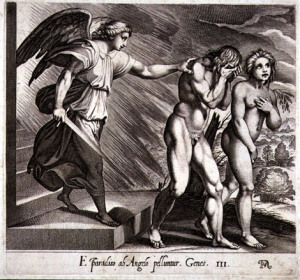
In Milton’s Paradise Lost, Adam is in blissful union with God until he eats the fruit of knowledge, and his new self-knowledge causes a separation. But it is exactly this separation, this true awareness of his limitation, that enables, or impels Adam, to question his place in the world. It is this same limitation that impels an author to ask a question, and craft an answer in the form of a story.
Writers who use narratives about origins and beginnings will always have a special ability to explore the mysteries of our universe. Each creator must have his creation: Frankenstein and his monster, Galatea and Pygmalion, Higgins and Eliza—eternal dualities of parent to child, artist to his art, teacher to pupil. And implied in these narratives is the unwritten but clear possibility that we, as readers, may be one more Matryoshka doll, positioned in a universe of endless succession. Is God truly the alpha and omega, found both at the beginning and the end of this eternal chain, or are these worlds within worlds simply a construct, divorced from any reality of the physical world?
Do we live a universe of Matryoshka dolls? Is it truly ‘turtles all the way down’? Who knows. The one thing I’m certain about is that a storyteller needs an audience, and an audience needs a storyteller. Each is essential to the other, and if we love a good story, perhaps that’s all we need to know.

A version of this essay was published in the South Carolina Review.


October 4, 2012
Fairies are Afoot: Following the Footsteps of Michael Crichton and Arthur Conan Doyle
The table in front of me was bare, except for tape recorder and a box of Kleenex. I understood why the tape recorder was there, but why the Kleenex?

The answer starts with Michael Crichton’s autobiography, Travels. In it, he writes about an experience he had visiting an unusual organization in London:
“It was called the Spiritualist Association of Great Britain. I called it the psychic smorgasbord. They had all kind of psychics, and you could consult them for only ten dollars an hour…Coming in the door, you passed the chair of Sir Arthur Conan Doyle, the Association’s most famous an influential member. The chair was always a sobering reminder to me. Anyone with a scientific background who becomes interested in metaphysical things must find the example Sir Arthur Conan Doyle disturbing…This was my concern: that an otherwise sensible physician-turned-author could go so far as to persuade him self, in degrees, of the existence of fairies. I had in the past strongly identified with Conan Doyle, and now I appeared to be following in his footsteps rather closely. I determined to proceed with caution.”
In 2003, finding myself in London, I decide to pay a visit and see for myself what Crichton had talked about. As a medical doctor and also a writer, I naturally found his cautionary words about Conan Doyle compelling. A man of science, and a skeptic, I had never gone to a psychic in my life, but if Crichton had followed Doyle’s footsteps, I could follow his. The challenge was before me. I would visit the Association for purely scholarly and academic interest—it would merely be as a neutral observer, gathering date about the intriguing phenomena of psychic abilities. At least that’s what I told myself.
I called the Association and learned that the fee for a consultation was now forty dollars. Still, a bargain, considering it had been almost twenty years since Crichton’s visit. Like a doctor’s office, the woman on the phone asked me some questions, and then made an appointment with a psychic for the next day.
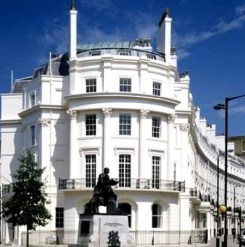
At the time of my visit, the Spiritualist Association of Great Britain was located in Belgrave Square, posh to the nines and loaded with old money. Armed guards watched me suspiciously as I passed by the many embassies located in this part of London.
I found the address and went through the door—inside was a desk, and at one end, Arthur Conan Doyle’s chair. Above it, a painting of Conan Doyle was prominently displayed. If the old man couldn’t be there personally to greet me, this was the next best thing.
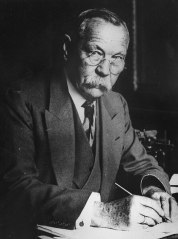
I was taken to a room and told to wait. It was a simple room, with almost no features: a cardboard table, a box of Kleenex, and a small audiocassette tape deck (so that the reading could be recorded, if the client was so interested). The walls were bare except for a painting on the wall across from the door. The painting was a daub, something a high school student might have done. And there was a clock behind me. The carpet was worn, and the paint on the walls was peeling. There was a genteel decay about the whole operation. I made me feel better. There was no pretense given to show. It was all about the telling.
After ten minutes, I started to get restless. No psychic. The noise of the clock grew louder. Five more minutes passed. I visualized my forty dollars slowly disappearing into a nameless spiritual and financial void. I got out my chair and went to the front desk.
They had forgotten to tell her I was there. Apologies were made, and they produced the medium. She was short and stout, in her sixties—a stand-in for Miss Marple, if Miss Marple had ever gone in for psychic readings instead of solving crimes. We went back to the consultation room. I resisted asking the obvious question that if she was psychic, why didn’t she know I was waiting for her? Instead I reminded myself that I was going to be on my best behavior. Crichton had gone several times for readings and in a stab at scientific methodology, had decided to give the same answer: ‘I don’t know,’ to every question, but conceded later that this was a dumb idea. I had decided that if I was to get anything out of this encounter it was important to keep an open mind. Being close-mouthed and cynical would be a waste of her time and my money.
She went right to work. As I settled into my chair, she said, “Your grandfather is behind you. It’s your father’s father.”
That caught me off guard. “That would be Munroe Heiss. I would think he’d be fishing somewhere.”
“He’s very interested in your career,” my psychic Miss Marple continued. “He wants you to keep up with, not get discouraged…And I sense a male presence. A male close to you has died of a heart attack, without time to say goodbye.”
“My father died suddenly of a heart attack about ten years ago.”
“And I feel sadness and loss. You had a close friend die, a long time ago.”
“That’s true. It was very sudden. He was hit by a car in Italy. Can you talk to him, ask him what happened?”
She gave this some thought, and said at last, “He wants to tell you that what happened was a huge surprise to him. A huge surprise. But to tell you that he’s very happy were he is now. Very happy.”
I started to tear up, realizing for the first time where I was. This was a doctor’s office, and I was a patient. If she was not a doctor in the strictness sense, she was a healer, and the Kleenex box was a tool of her trade.
I was on my second Kleenex before we finished the session and she shuttled me back to the lobby, where Sir Arthur Conan Doyle’s painting did everything but wink at me. “You see,” his portrait whispered, as if talking to a colleague, “now do you understand why it’s so important I spread the word about what these people can do?” I gave a nod to the painting and stepped back into Belgrave Square, back to a patch of London almost unchanged from the days when Sherlock Holmes himself was prowling the streets.
Looking back at this event ten years later, it’s possible to get some perspective about my experience compared to Crichton’s as we both followed the footsteps of our mutual hero, Arthur Conan Doyle. Doyle was criticized for his support of psychics and paranormal research — an interest that seems contradictory to the tenets of objectivity held by his famous fictional creation. But it’s important to remember Doyle was a man of his time, and the carnage and devastation of WWI provoked a world-wide interest in psychic phenomenon as grieving families struggled in their effort to say goodbye to their loved ones. With this in mind, his interest in paranormal research was completely understandable.

Crichton was right to ‘proceed with caution’ in regarding believing in movements, but what he didn’t take into account is that our world is ever new and different, and we make mistakes that echo but never duplicate the past. What Crichton never realized was that he was on his own, personal path to self-delusion, (or keen insight, depending on your point of view), and that path was not a belief in spiritualism, but as a campaigner against those warning against global warming.
Each of us has our own chance at pursuing a grand folly, a folly very much generated from circumstances of time and place, and each era will generate its own supply of follies or delusions. Crichton used the mantle of a skeptic to protect his conclusion that the earth was not getting warmer, even though the scientific evidence for global warming was compelling and getting more so every year. He became a believer in the art of unbelief, at least regarding climate change. An otherwise ‘sensible physician-turned-author’ persuaded himself, in degrees, that there was no global warming, or if there was, it was not caused by human intervention. By the time of his death—of throat cancer (he smoked most of his adult life)—Crichton became almost as well-known as a global warming denier than as a novelist. Michael Crichton found his fairies, they were just different ones than Arthur Conan Doyle’s.
In a few more decades, if we lose the rest of the ice rapidly melting in the both the Arctic and Antarctic, Crichton’s role as a climate change denier might register as far more cringeworthy than Conan Doyle’s assertion we can communicate with the dead. Did Crichton’s highly visible profile as a climate change denier have any significant impact to the human and animal populations threatened by the rise of sea levels and change of temperatures? Probably not—but in a position where he could have at least been a spokesman for preservation of habitat—climate change or not—instead he spent the last years of his life defending a claim that each year became progressively more tenuous.
In the end, Michael Crichton did follow the footsteps of Arthur Conan Doyle. The difference is that when you then follow Crichton’s footsteps, there is no house in Belgrave Square with a portrait of his face greeting you as you walk in the door, no sparse room with Kleenex boxes ready for use, and no one present to try to help you understand why bad things happen to good people. We will all discover fairies—if we live long enough—let’s try to find the ones that will be kind and helpful as we are kind to them.




